STATE OF THE ART
On board the world's largest sailing catamaran, ArtExplorer
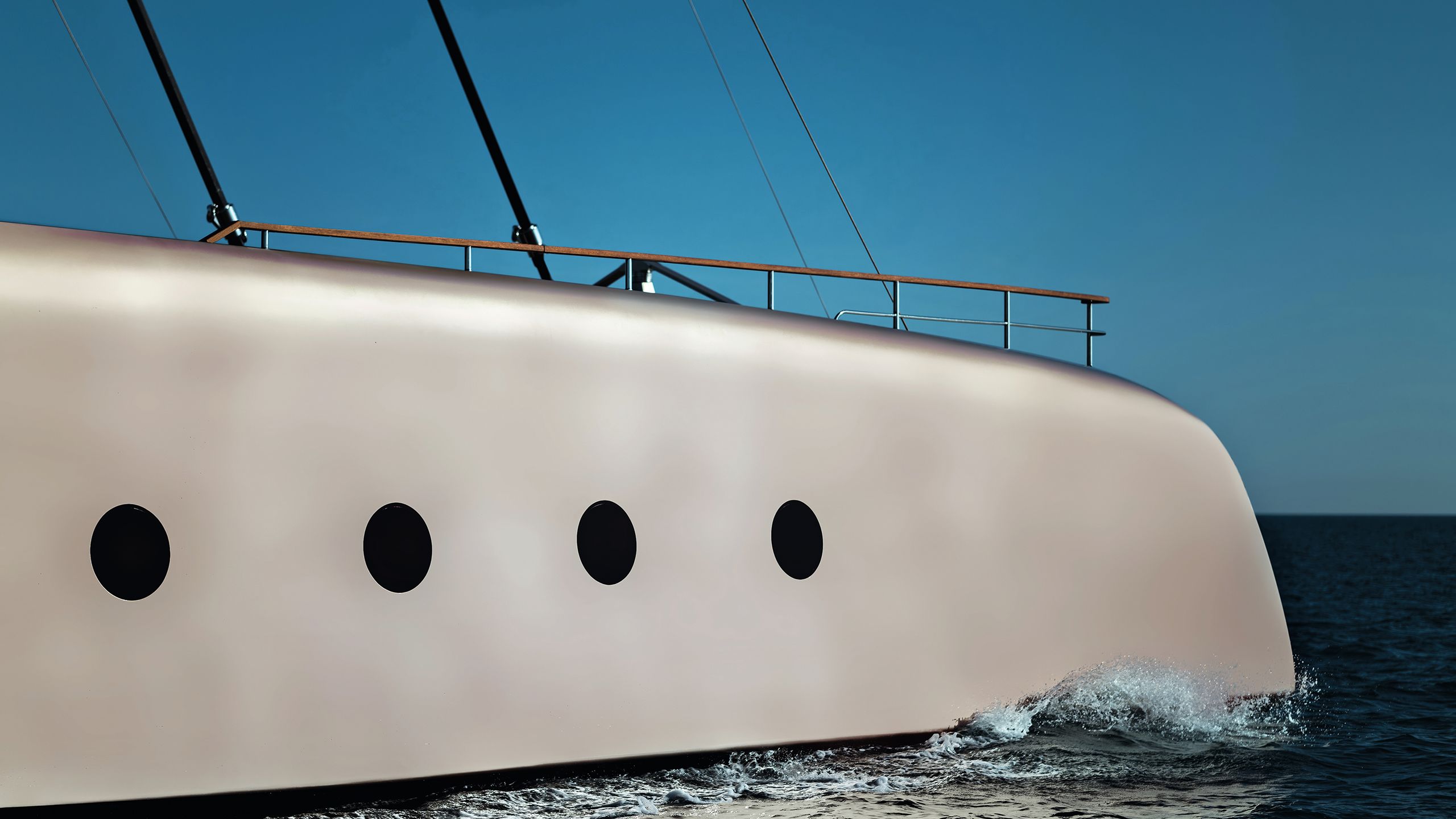
ArtExplorer's mission is revolutionary. Lucy Dunn discovers the extraordinary design behind this 46.5-metre Perini Navi, and its owner’s quest to take art to the people via the ocean.
BENOIT LINERO
Frédéric Jousset’s boat is no ordinary boat. While most yachts have no more than a handful of guests on board at any one time, 46.5-metre catamaran ArtExplorer will entertain up to 2,000 of them a day. Businessman Jousset won’t know these guests, they’ll be total strangers; ordinary members of the public invited on board to view a unique cinematic art exhibition.
The Perini Navi yacht will spend the next two years touring the Mediterranean (thereafter, the world) – the cornerstone of Jousset’s lifelong dream to pluck art from the stuffy walls of museums and galleries and bring it to the masses.
It’s a trailblazing project, and the same can be said of the yacht, because ArtExplorer is not just a floating museum. When she shuts up shop every autumn, she will transform into a luxury charter yacht and head off to warmer climes for the winter. This headline-grabbing dual design has made her one of the most-talked-about yachts of the decade – not least because she is also breaking records as the world’s largest sailing catamaran.
MAX MALTH
Frédéric Jousset’s boat is no ordinary boat. While most yachts have no more than a handful of guests on board at any one time, 46.5-metre catamaran ArtExplorer will entertain up to 2,000 of them a day. Businessman Jousset won’t know these guests, they’ll be total strangers; ordinary members of the public invited on board to view a unique cinematic art exhibition.
The Perini Navi yacht will spend the next two years touring the Mediterranean (thereafter, the world) – the cornerstone of Jousset’s lifelong dream to pluck art from the stuffy walls of museums and galleries and bring it to the masses.
It’s a trailblazing project, and the same can be said of the yacht, because ArtExplorer is not just a floating museum. When she shuts up shop every autumn, she will transform into a luxury charter yacht and head off to warmer climes for the winter.
This headline-grabbing dual design has made her one of the most-talked-about yachts of the decade – not least because she is also breaking records as the world’s largest sailing catamaran.
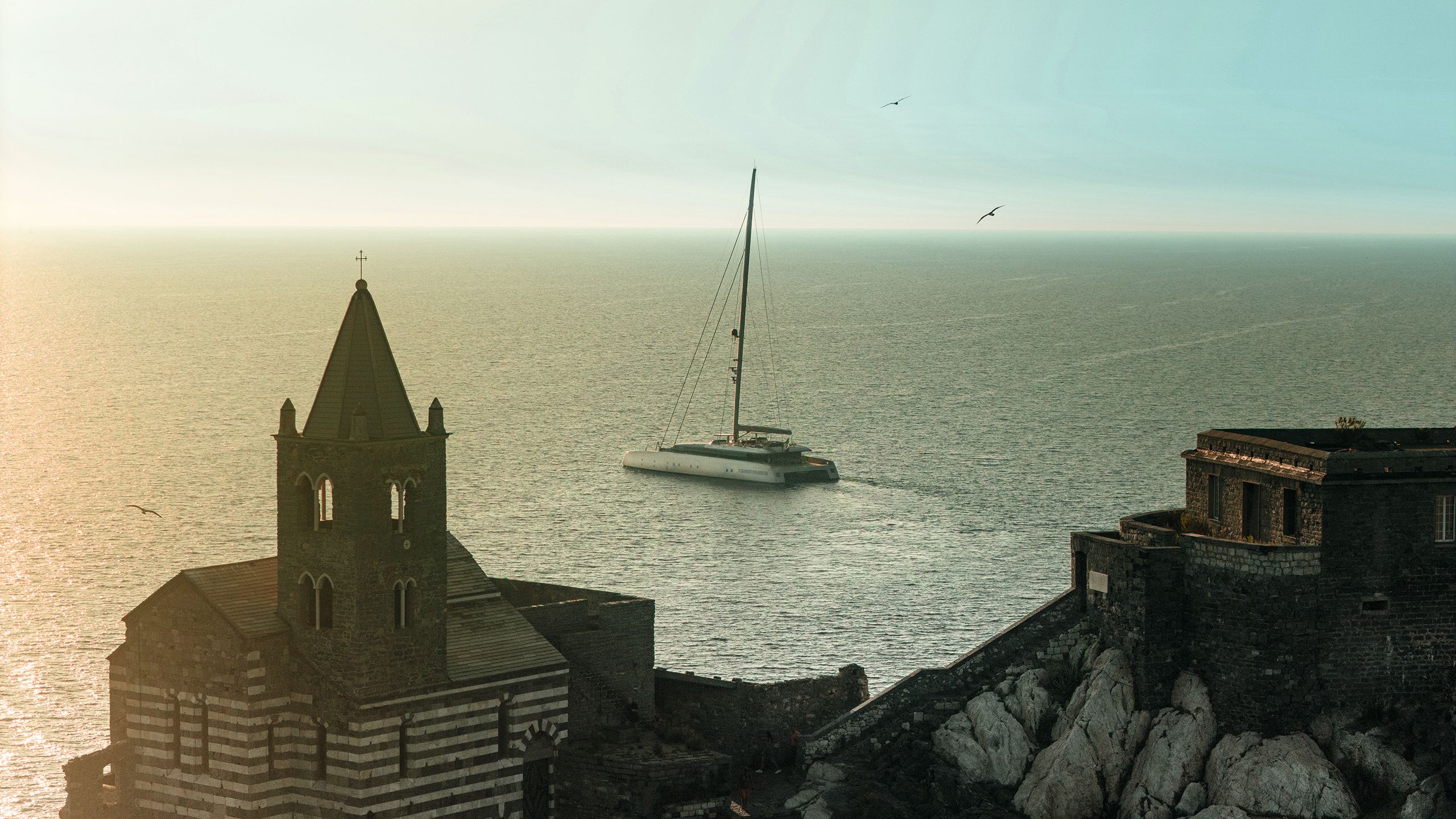
MAX MALTH
MAX MALTH

“I don’t see myself as a yacht owner, more of a museum director,” says Jousset when we speak via Zoom. Softly spoken with a laser-like focus, the French tech entrepreneur and philanthropist founded outsourcing giant Webhelp in 2000 – which started out as a pre-Google search engine and expanded to employ more than 120,000 people around the world. Art is his great love, he tells me. At 35, a box-fresh multimillionaire, he forwent the Ferrari and donated €1 million to the Louvre.
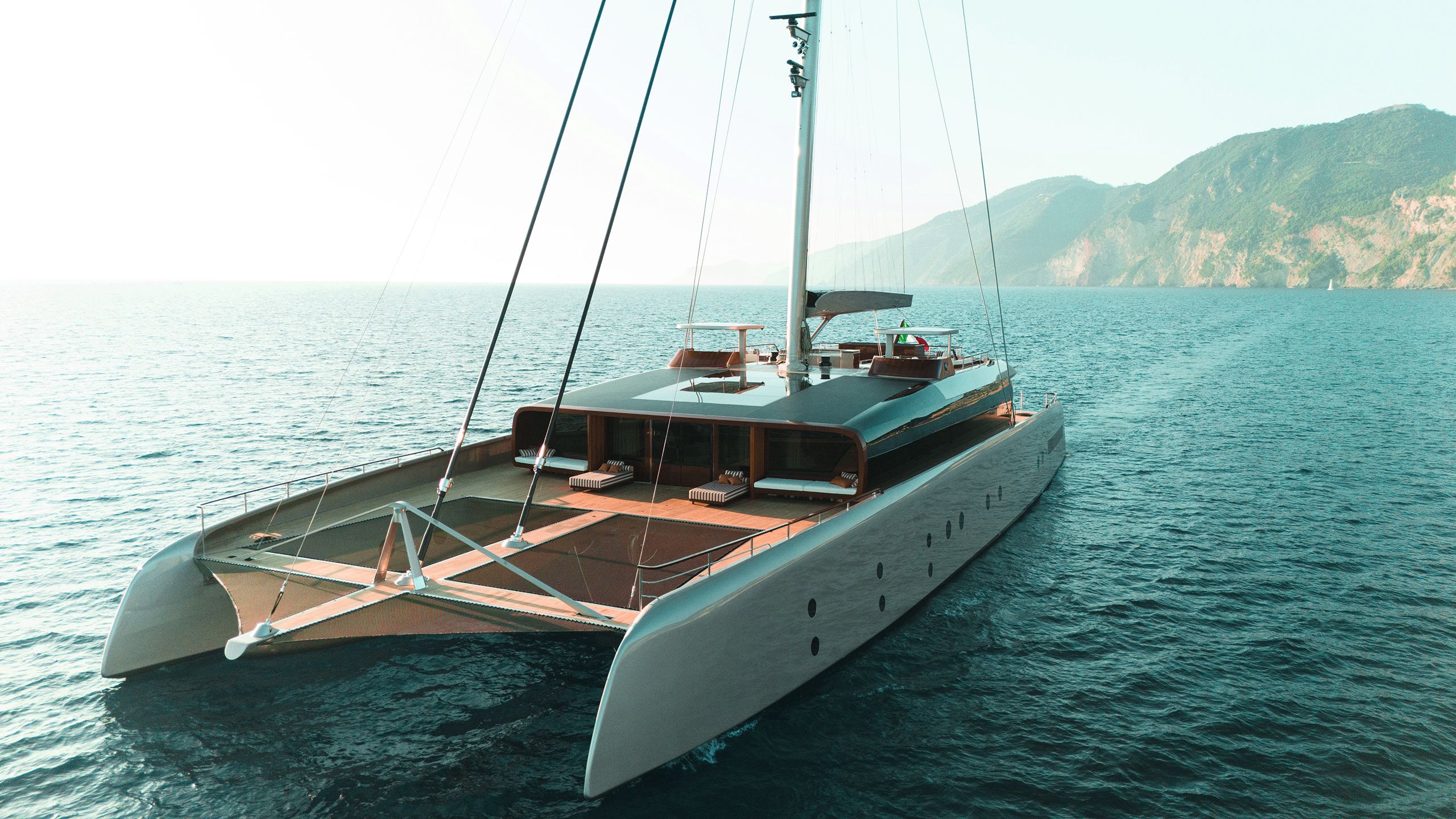
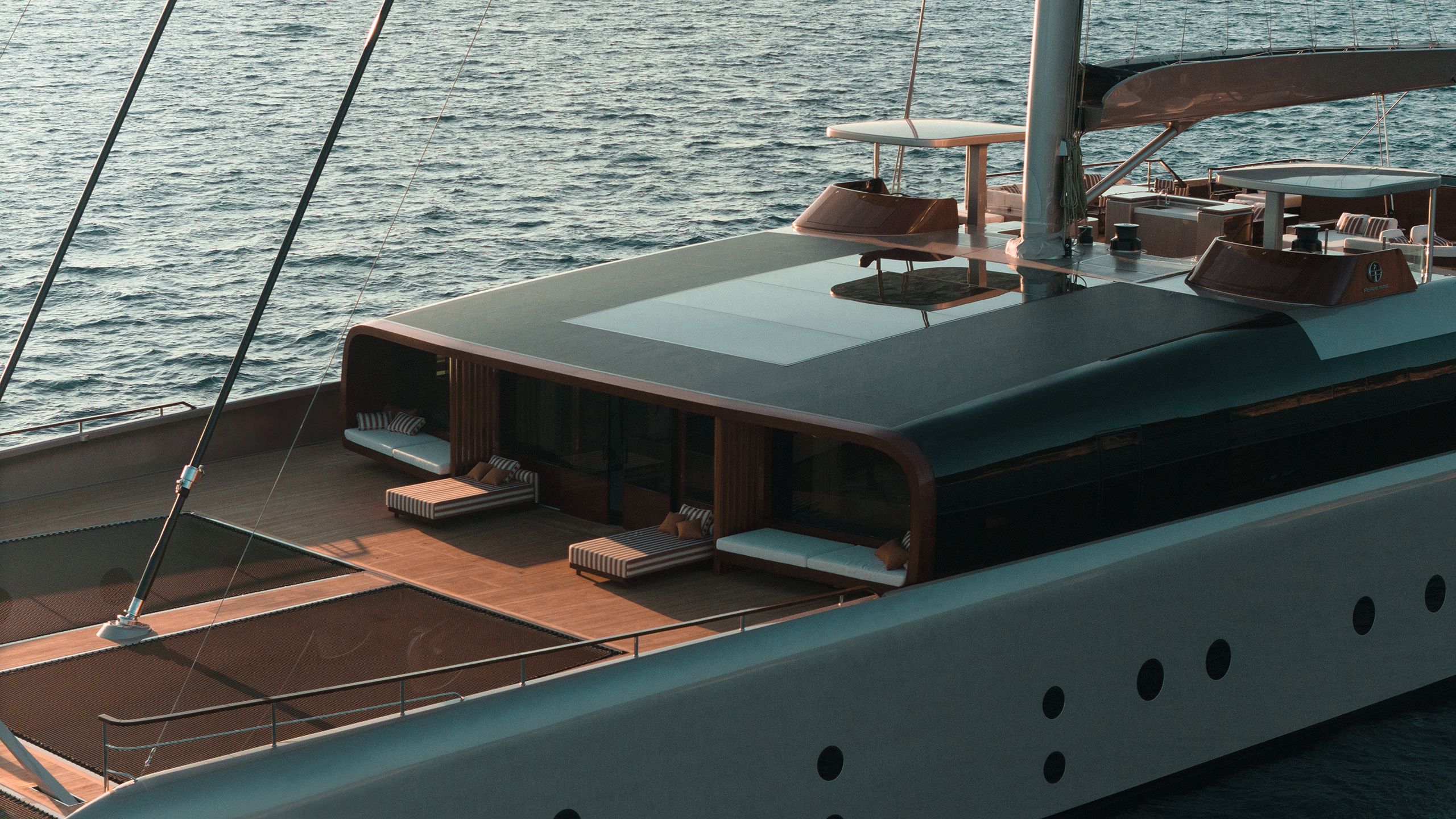
He is also a self-confessed adrenaline junkie who races catamarans for fun. The idea for ArtExplorer came when he was climbing Mount Everest in 2019. “One always says the man who comes down is different from the man who climbs up. And literally, this is where I had an awakening moment,” he recalls.
Chartering a sailing yacht cemented his plan. “I started to think about how much I loved culture and what I could contribute. I could add another museum, but it’s nothing new. Private foundations have been done, but I thought no one has thought of the sea, of using a boat as a platform.”
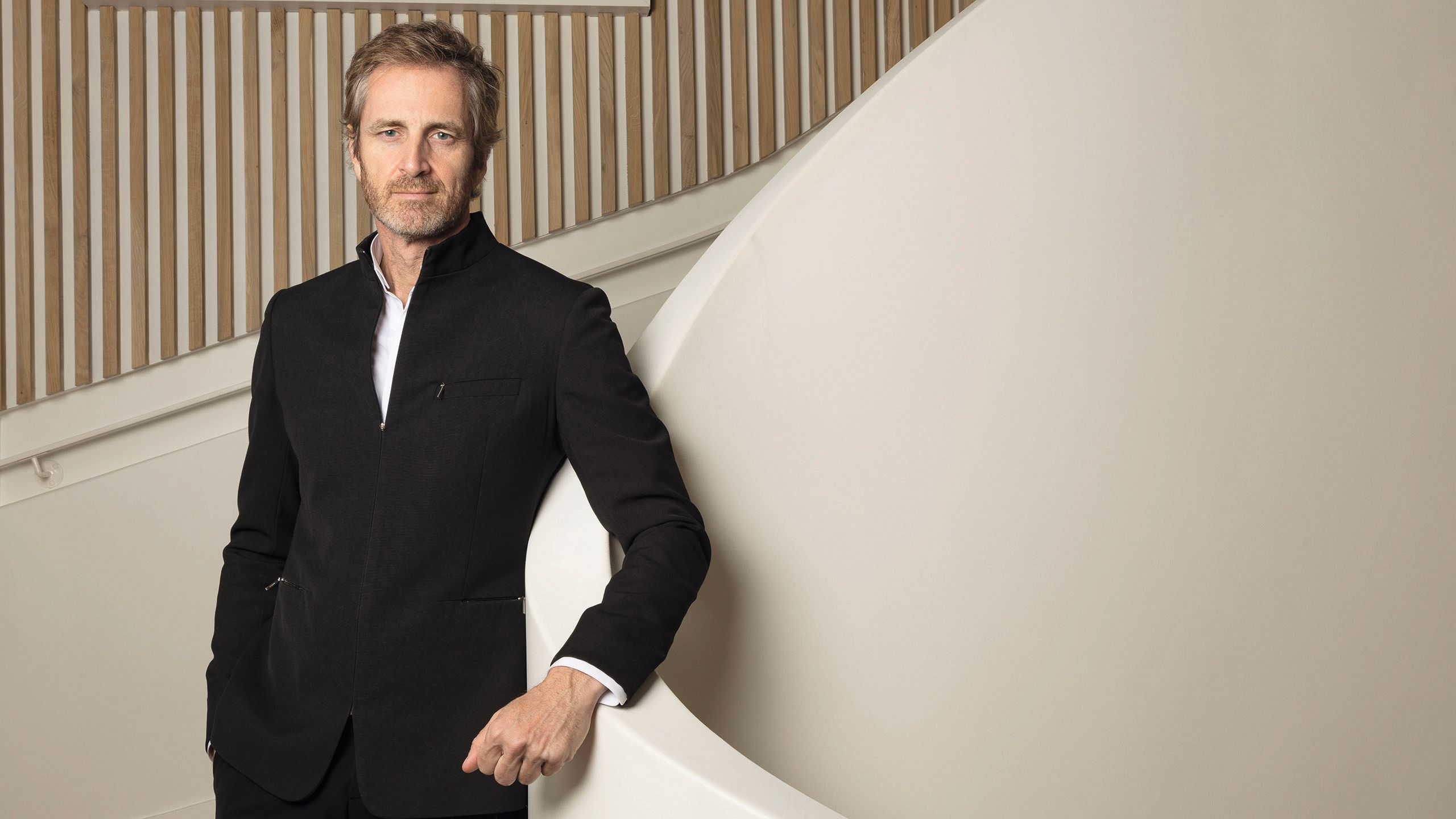
FRANCOIS ROELANTSOwner Frédéric Jousset
FRANCOIS ROELANTSOwner Frédéric Jousset
Art is a force for good, and he passionately believes in its power to unite society and increase social mobility. “I’ve seen so many times people blocked in their career because of their social skills, because they have the wrong accent or because they don’t have the cultural references.”
His plan was to build a huge attention-grabbing sailing catamaran which would draw the crowds and bring art to the people – “and if people don’t come to us, we will come to them”. In fact, ArtExplorer is just the pinnacle of a larger foundation offering pop-up arts and cultural programmes.
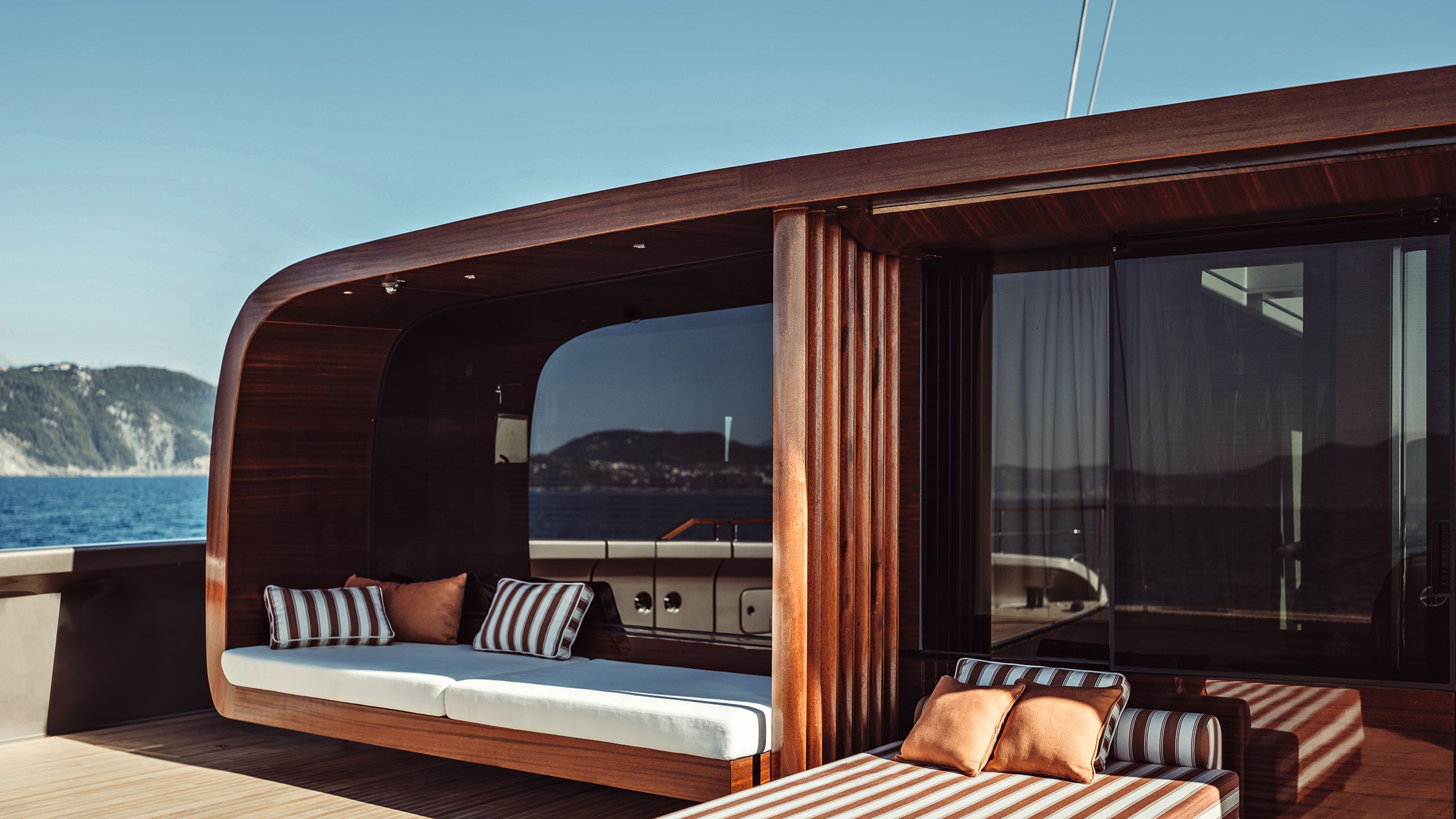
BENOIT LINERO
BENOIT LINERO
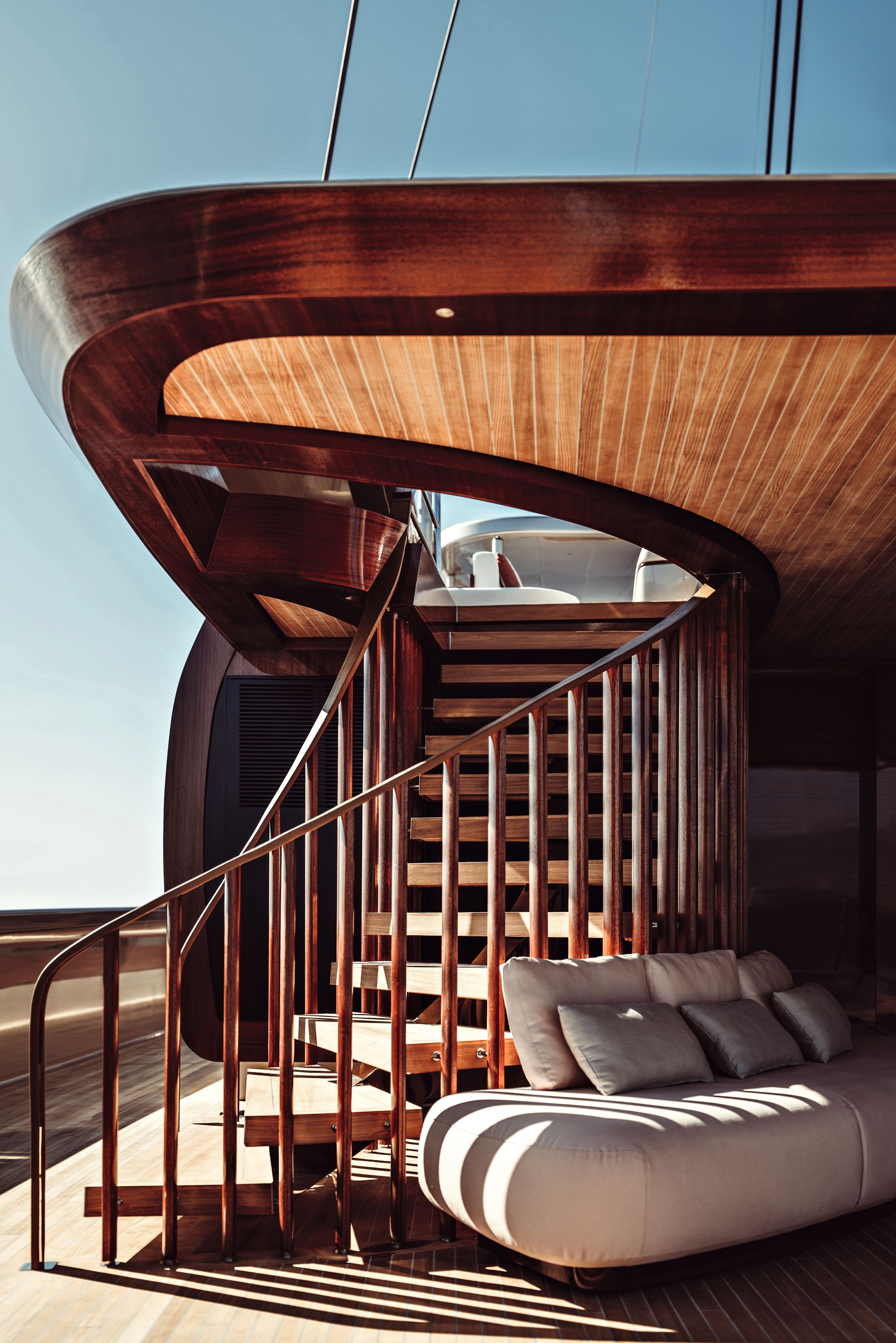
BENOIT LINERO
BENOIT LINERO
Italian fabric house Loro Piana created the fabric for the striped director’s chairs and loungers – “very dolce vita”, says the yacht’s designer, Axel de Beaufort
The Louvre collaborated with him for the exhibition. Early on, the idea of displaying oil paintings was ditched – they’d be too sensitive to salt and moisture in the air and insurance would be sky-high. Instead, the public would be able to enjoy a number of A/V experiences on board, including a 16-metre state-of-the-art cinematic “tunnel” running the length of the boat.
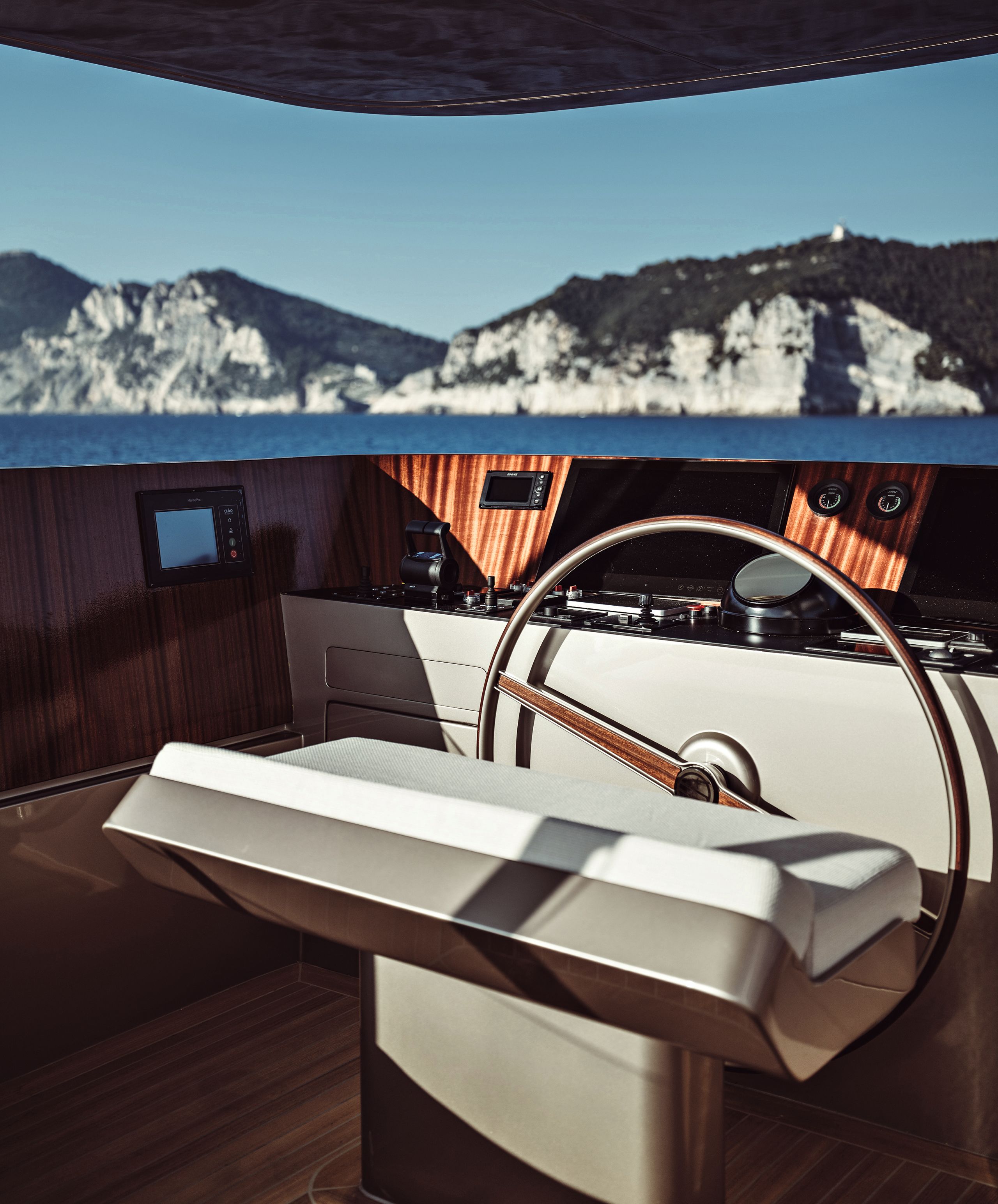
BENOIT LINERO
BENOIT LINERO
ArtExplorer’s tour of the Med will be supported by an exhibition portside, with pavilions showing physical artworks brought in by lorries. It’s a huge logistical feat, and while the upfront build costs are all Jousset’s, the boat will need to pay her way when it comes to operational costs, which is why luxury charter, along with private donations and EU subsidies, will be key to the longevity of the project.

BENOIT LINERO
BENOIT LINERO
The man who listened to Jousset’s back-of-a-napkin idea almost four years ago and ran with it was Fraser’s technical manager Laurent Bredy, who acted as owner representative.
There was no precedent for a floating museum-cum-superyacht – “It’s what I call a UFO, an Unusual Floating Object!” Bredy jokes – so two competitions were held: one to find a designer, the other a shipyard. The job eventually fell to The Italian Sea Group’s Perini Navi, experts in sailing yachts, competitively priced and thrilled at taking on the challenge.
Their brief, says Perini Navi’s sales director Andrea Bigagli, was to build “something extraordinary… the best and biggest sailing catamaran in the world; a yacht which combines the French soul of its owner and designers, with Italian craftsmanship and Perini Navi know-how in the large sailhandling system”.
They also needed to build it in a near-impossible time frame of just over two years. There were few other shipyards that had the facilities and the expertise to take on such a project, but even then it was the first time Perini Navi had built a sailing catamaran, and Bigagli stresses it was very much a team effort, a tight synergy between shipyard, design team and the Fraser team.
“When you normally press the button to build the boat, you don’t change anything,” says Bredy, “but the complexity and challenges obliged us to adapt the project right up to the end.”
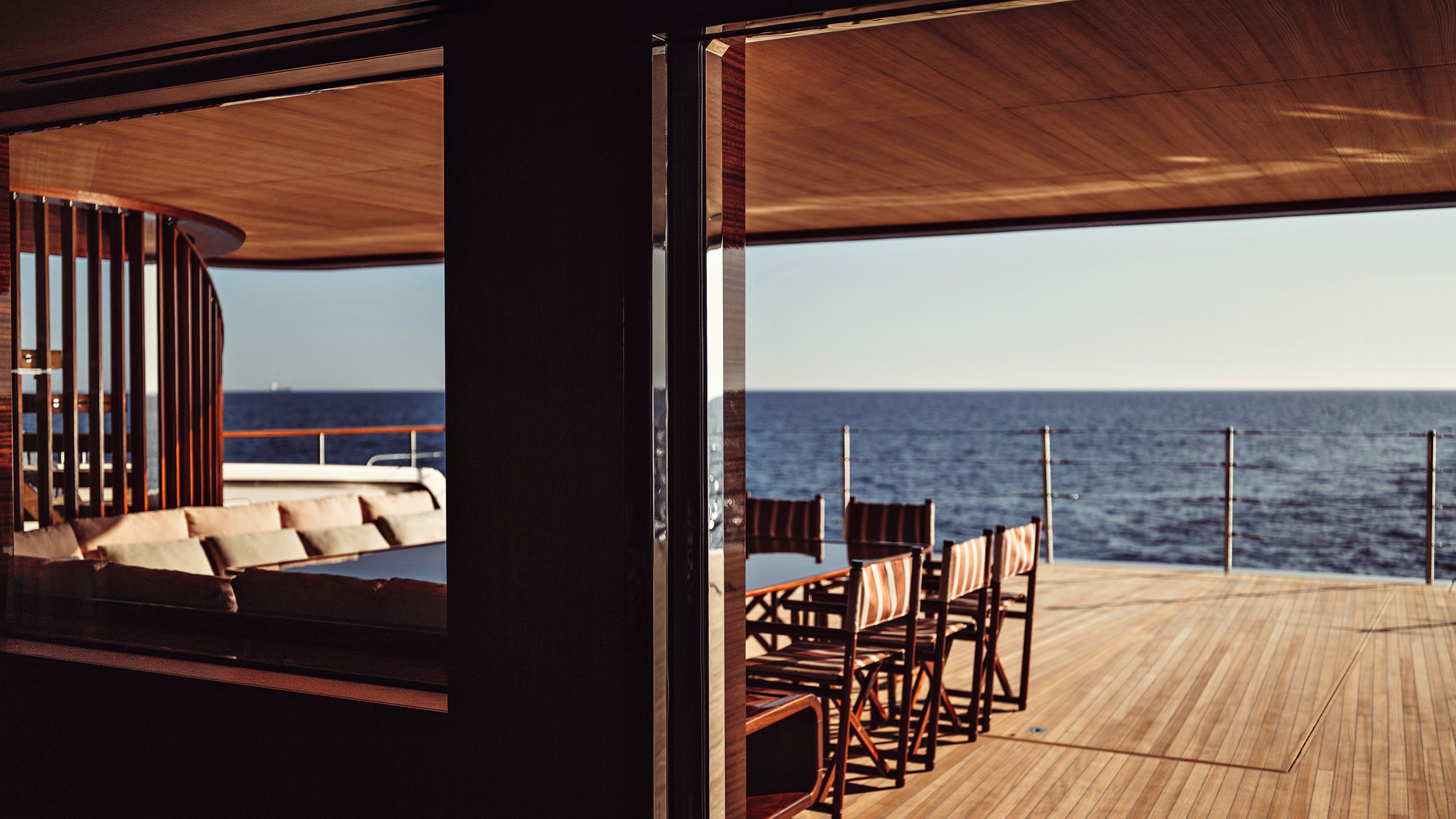
BENOIT LINERO
BENOIT LINERO
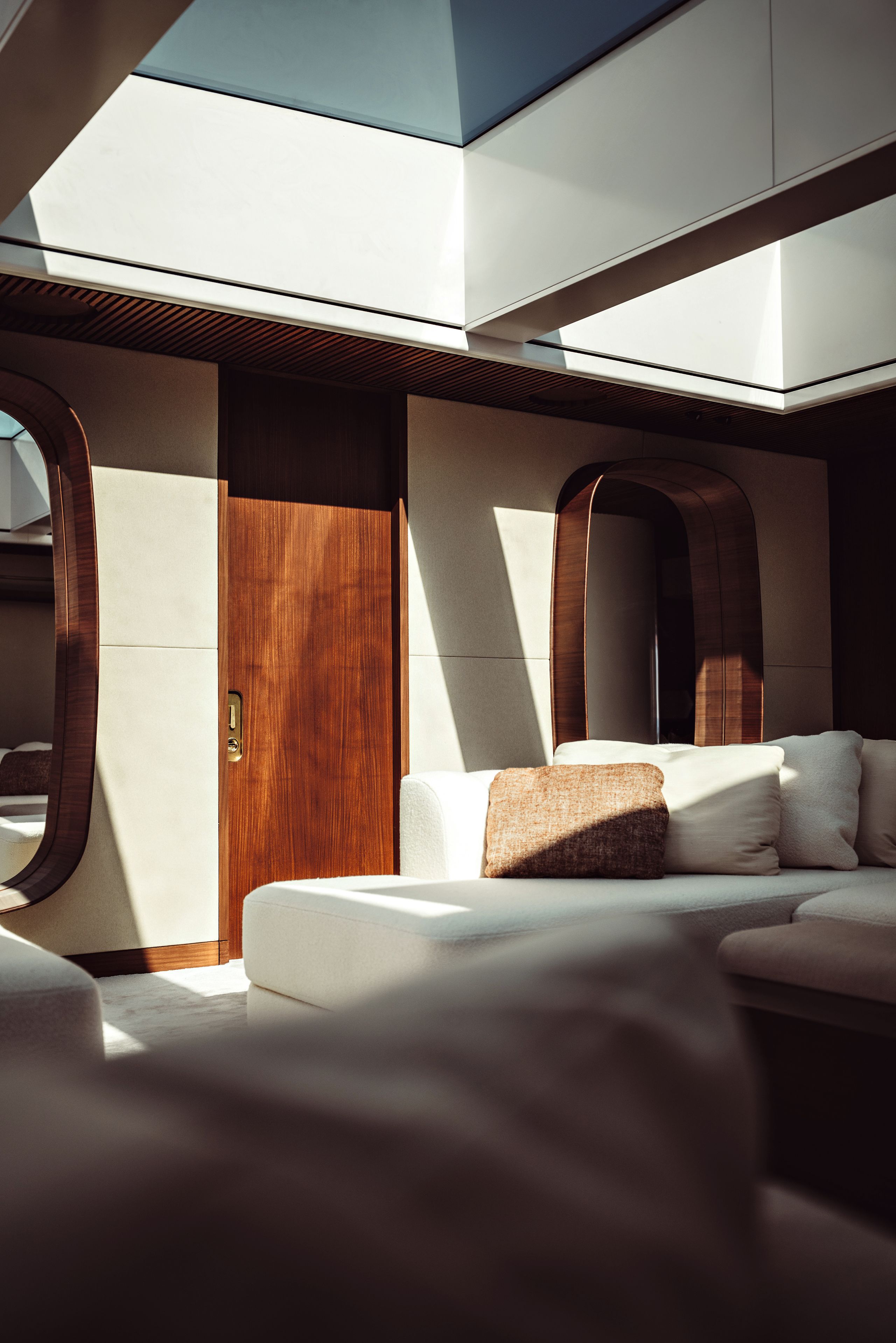
BENOIT LINERO
BENOIT LINERO
The mast column, AKA “the bean”, breaks up the huge saloon into cosy zones (left); Axel De Beaufort even had a hand in designing the loose furniture, collaborating with Pierre Frey to create the rounded bouclé wool sofas and armchairs, as seen in the main saloon (left)
It was also a project naval architects Axel de Beaufort and Guillaume Verdier couldn’t refuse. The pair run their own studios and regularly join forces on projects such as designing racing yachts for the America’s Cup, while de Beaufort also has a sideline as creative director for Hermès’ Atelier Horizons, designing a range of custom projects from car interiors to private jets.
The prospect of being given full reign over all aspects of ArtExplorer’s design – from the hull to the interiors, right down to the sofas, fabrics and doorknobs, appealed to de Beaufort. “We like to go very deep on a subject… and I’d rather have the full project than do part of it.”
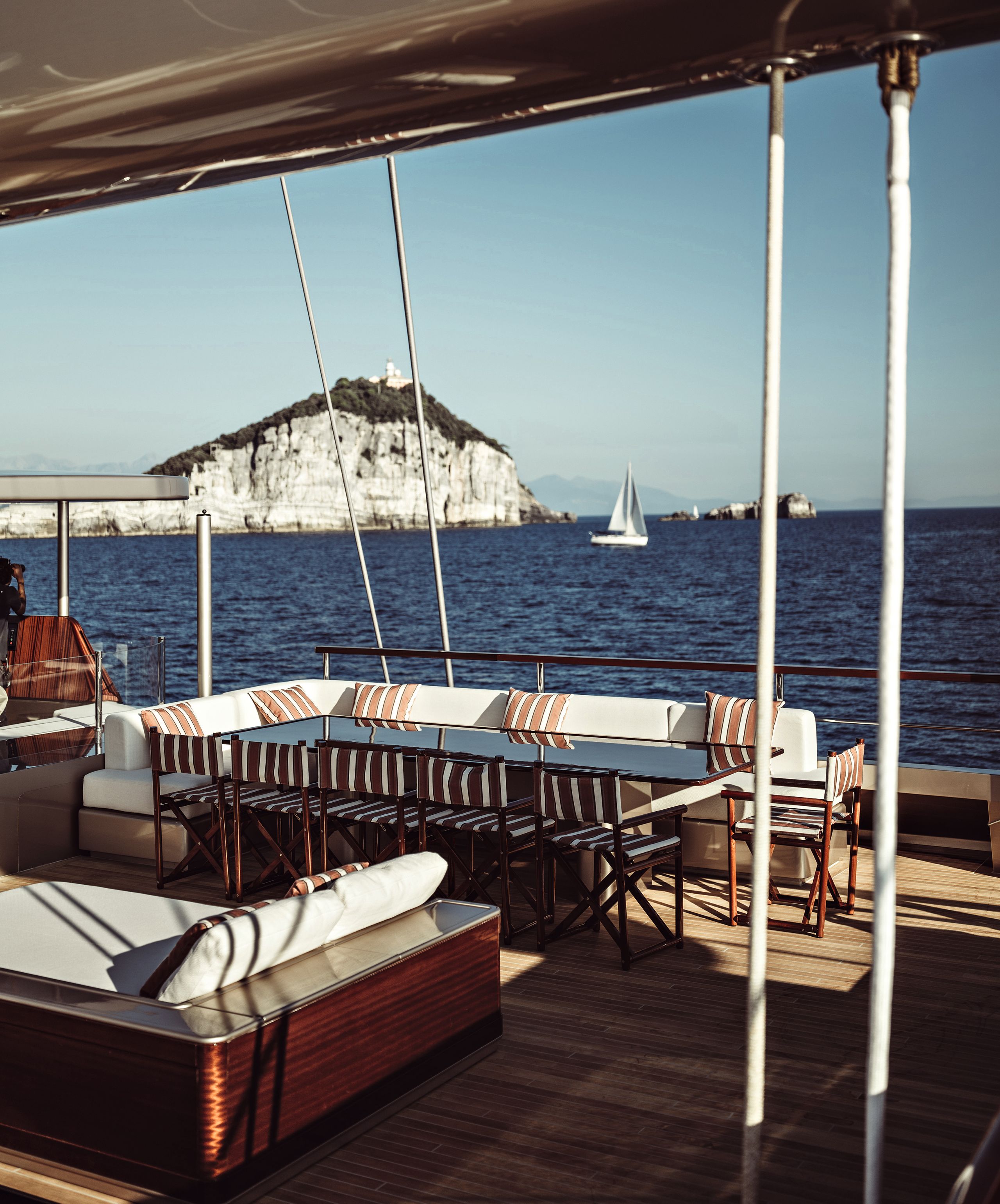
BENOIT LINERO
BENOIT LINERO
Large cruising catamarans are, with their large decks and wide platforms, heavy watercraft. Jousset wanted volume, but also for the boat to really move when cruising. (Under sail, ArtExplorer can easily exceed 12 knots with approximately 15 knots of true wind speed.)
So, de Beaufort and Verdier employed all their own high-precision aero-hydro tools, working with Lateral Naval Architects in the UK for the initial conception before starting to work with Perini to make the aluminium structure as efficient as possible.
The result was a groundbreaking design with a thin hull shape and long keel. “There’s a big step above the waterline that enlarges the hull, but underneath the hull is very thin and very deep to optimise hydrodynamic resistance,” says de Beaufort.
THE SAILING PLAN
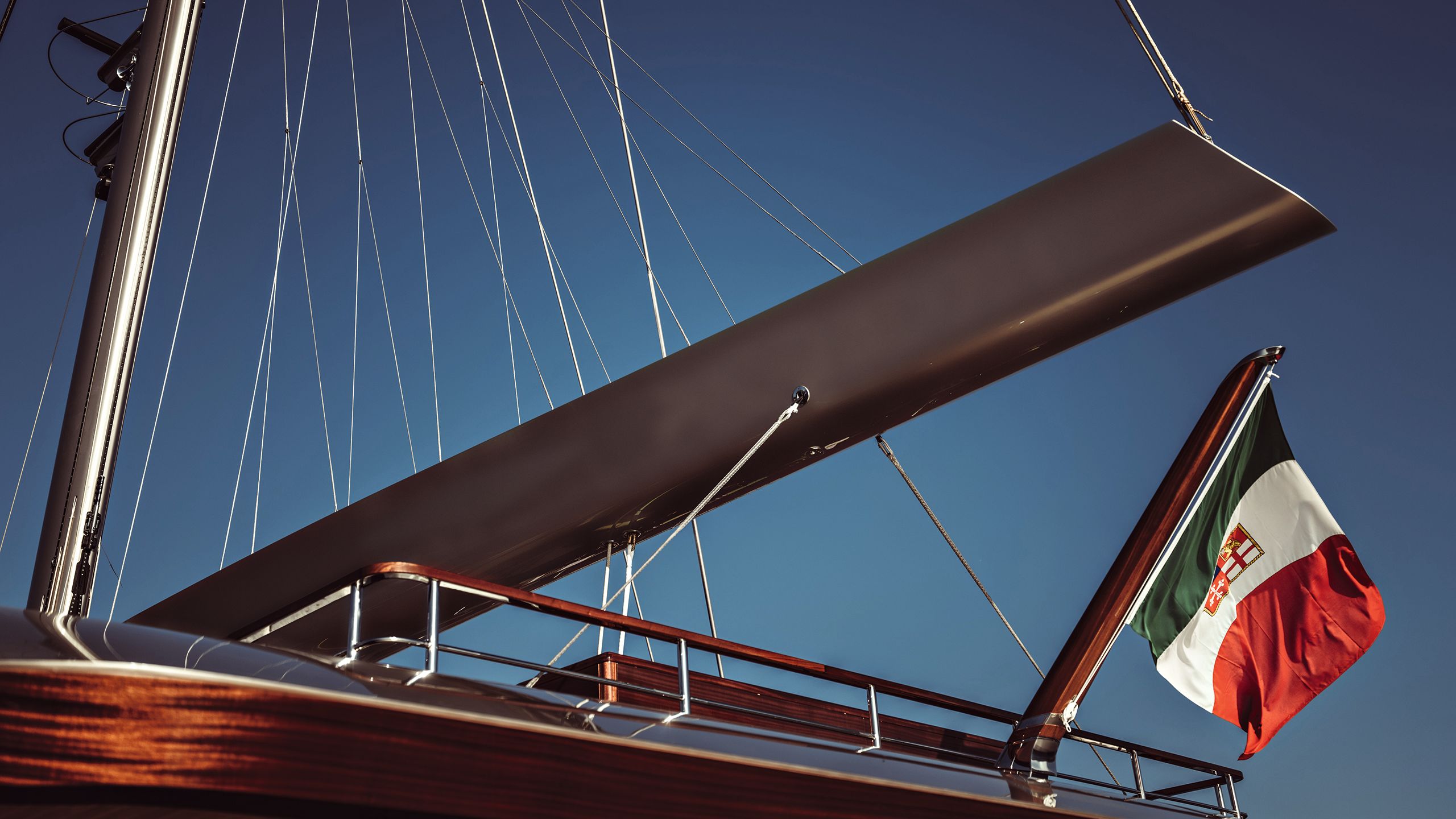
When it comes to the LOA of a sailing catamaran, size is governed by the size of the mast and the stress on the sails: ArtExplorer’s whopping 55-metre mast and 1,200-plus square metres of sail ended up with more than 90 tonnes of tension in the rigging and a 240-tonne compression of the mast. “Now imagine the tensions on a 70-metre mast,” says Laurent Bredy. “It means building a sailing cat bigger than ArtExplorer is pushing the realms of current technical know-how.”
“The sailing plan, mast and spars were developed with Nacira Design (naval architect) and Lorima (spar maker) with FEM calculations, to optimise loads,” says Andrea Bigagli. The mast, boom, standing rigging and forward cross-section beam were made in stronger than-steel, ultra lightweight carbon composite, a choice that was made right at the project’s start, not just to lower the weight but also to reduce the standing rigging and number of spreaders.
On this mast there are no spreaders, which has a huge impact on the windage. “It’s crucial to have light spars,” explains Axel de Beaufort. “As well as making the catamaran super stable, you have to picture the inertia up there – the heavier the rig is, the greater the strength it will have to withstand.”
The enormous mast – wide enough that you can fit a person inside it – had to be transported in one piece from Northern France to the shipyard in Marina di Carrara.
Special permits and police escorts were enlisted – but transportation rolled into the holiday season, when roads in Italy and France are closed for large loads, which meant that drastic action was taken to ship the mast to Italy by boat – just one of the many daily challenges the team faced on this one-of-a-kind project.
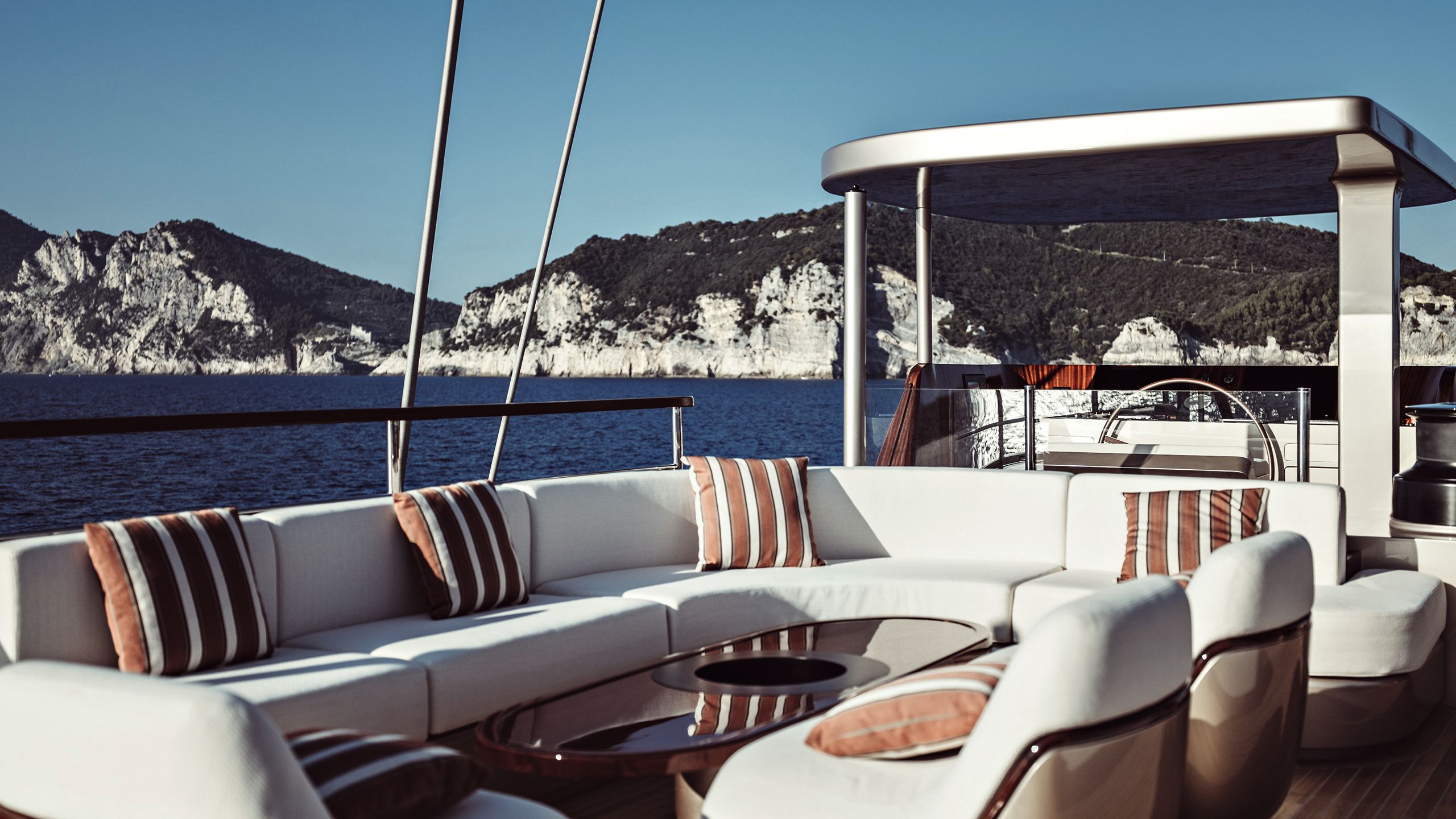
BENOIT LINEROAll the furniture used in cruising mode needs to be able to be carefully packed away in lorries when the boat begins its museum duties
BENOIT LINEROAll the furniture used in cruising mode needs to be able to be carefully packed away in lorries when the boat begins its museum duties
When it comes to the LOA of a sailing catamaran, size is governed by the size of the mast and the stress on the sails: ArtExplorer’s whopping 55-metre mast and 1,200-plus square metres of sail ended up with more than 90 tonnes of tension in the rigging and a 240-tonne compression of the mast.
“Now imagine the tensions on a 70-metre mast,” says Laurent Bredy. “It means building a sailing cat bigger than ArtExplorer is pushing the realms of current technical know-how.”
“The sailing plan, mast and spars were developed with Nacira Design (naval architect) and Lorima (spar maker) with FEM calculations, to optimise loads,” says Andrea Bigagli. The mast, boom, standing rigging and forward cross-section beam were made in strongerthan-steel, ultra lightweight carbon composite, a choice that was made right at the project’s start, not just to lower the weight but also to reduce the standing rigging and number of spreaders.
On this mast there are no spreaders, which has a huge impact on the windage. “It’s crucial to have light spars,” explains Axel de Beaufort. “As well as making the catamaran super stable, you have to picture the inertia up there – the heavier the rig is, the greater the strength it will have to withstand.”

BENOIT LINEROAll the furniture used in cruising mode needs to be able to be carefully packed away in lorries when the boat begins its museum duties
BENOIT LINEROAll the furniture used in cruising mode needs to be able to be carefully packed away in lorries when the boat begins its museum duties
The enormous mast – wide enough that you can fit a person inside it – had to be transported in one piece from Northern France to the shipyard in Marina di Carrara.
Special permits and police escorts were enlisted – but transportation rolled into the holiday season, when roads in Italy and France are closed for large loads, which meant that drastic action was taken to ship the mast to Italy by boat – just one of the many daily challenges the team faced on this one-of-a-kind project.
The design concept came to de Beaufort when he was travelling: “My idea was to build the biggest platform you could make and create a type of ‘mansion house’ that you drop onto it.” He admits that sticking to the gross tonnage limit was his biggest constraint, a fact that Bredy confirms: “We discussed very early on with the owner, OK, where should we stop?” he says.
More regulation starts to apply as soon as the boat hits 500GT, the build gets more complicated, costs rack up and you give over a lot of precious space with fire safety features. “Four hundred and ninetynine is the magic number,” Bredy says. The huge 55-metre mast, boom, standing rigging and forward crosssection beam were all constructed in carbon composite to lower the weight as much as possible.
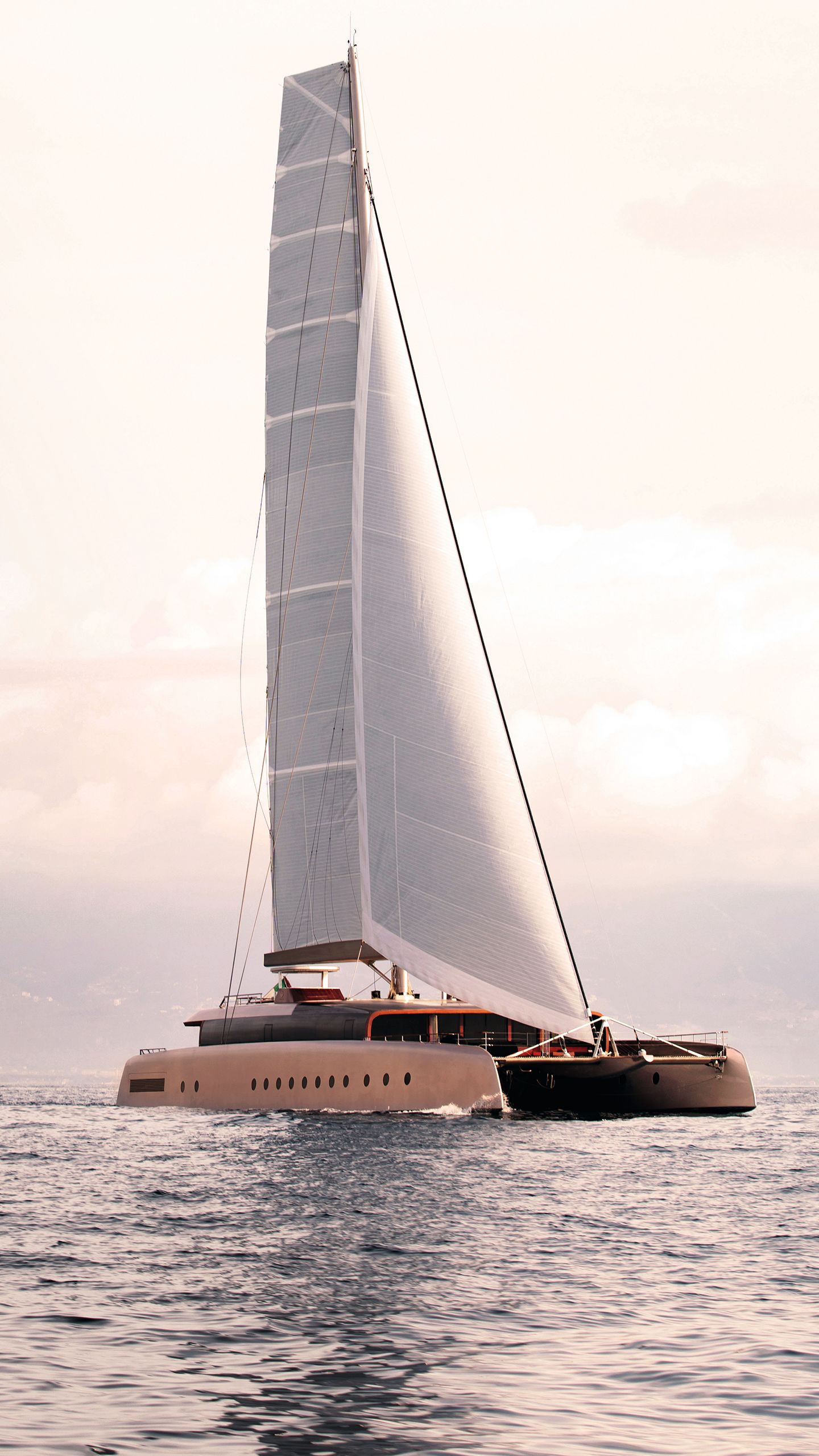
The team called on rig specialists Lorima in France, one of the only companies in the world to engineer and manufacture this size of mast for multihulls. Carbon composite is expensive but, since the sails needed to be the boat’s workhorse, very early on a decision was made to invest in that. “The brief was to use the sails as much as we can and not use the engine,” explains de Beaufort.
Some sustainability objectives could not be fulfilled however; Jousset wanted electric propulsion, but hull space was too tight and so the team opted for classic propulsion and added state-of-the-art exhaust filters and 65 square metres of solar panels.
“The solar panels and the generator recharge the battery bank which allows the yacht’s systems to run at anchor for several hours with zero emissions and no noise,” says Bigagli.
The design concept came to de Beaufort when he was travelling: “My idea was to build the biggest platform you could make and create a type of ‘mansion house’ that you drop onto it.” He admits that sticking to the gross tonnage limit was his biggest constraint, a fact that Bredy confirms: “We discussed very early on with the owner, OK, where should we stop?” he says.
More regulation starts to apply as soon as the boat hits 500GT, the build gets more complicated, costs rack up and you give over a lot of precious space with fire safety features.
“Four hundred and ninetynine is the magic number,” Bredy says. The huge 55-metre mast, boom, standing rigging and forward crosssection beam were all constructed in carbon composite to lower the weight as much as possible.
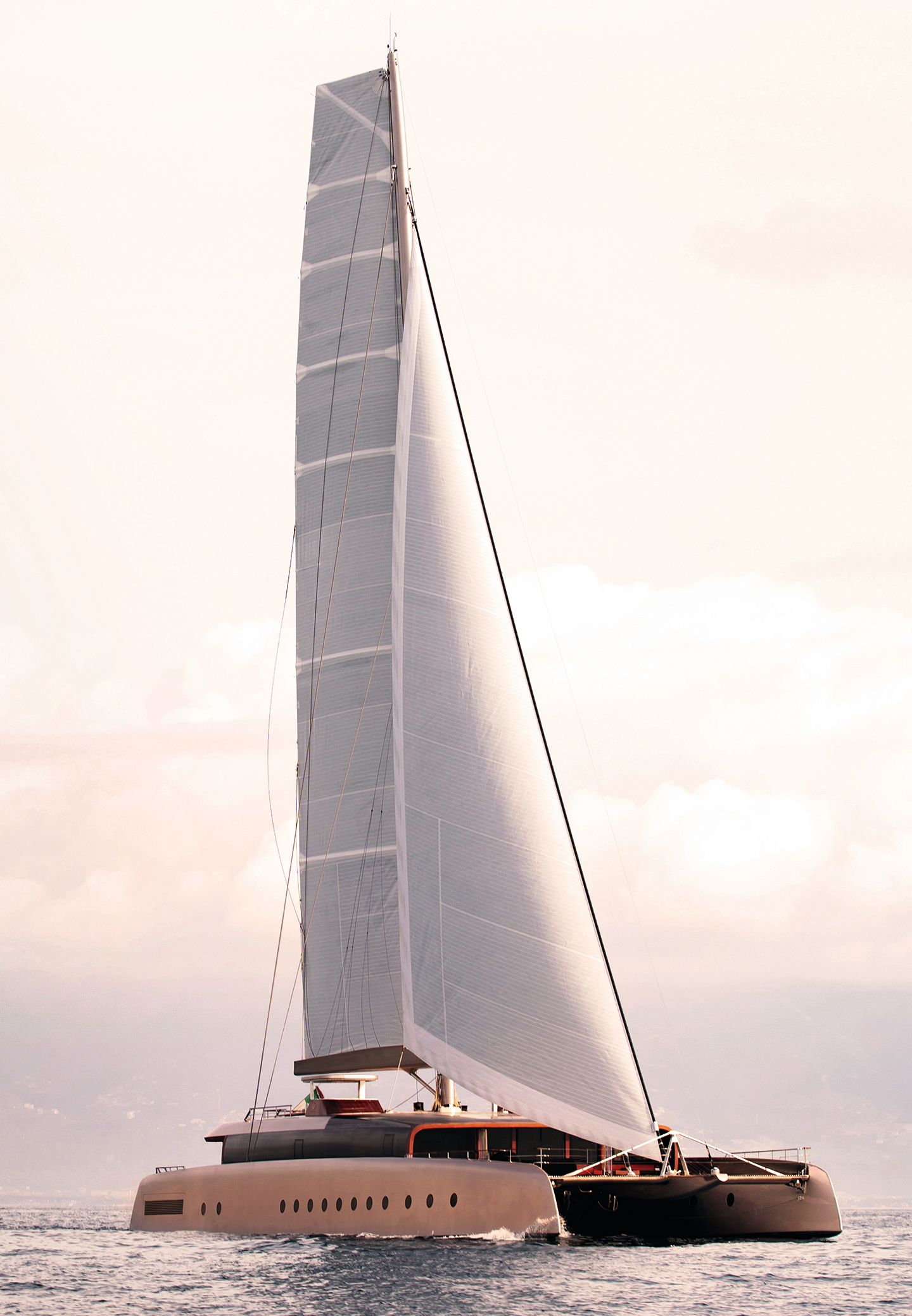
DRONE ACTIVITY
DRONE ACTIVITY
The team called on rig specialists Lorima in France, one of the only companies in the world to engineer and manufacture this size of mast for multihulls. Carbon composite is expensive but, since the sails needed to be the boat’s workhorse, very early on a decision was made to invest in that. “The brief was to use the sails as much as we can and not use the engine,” explains de Beaufort.
Some sustainability objectives could not be fulfilled however; Jousset wanted electric propulsion, but hull space was too tight and so the team opted for classic propulsion and added state-of-the-art exhaust filters and 65 square metres of solar panels.
“The solar panels and the generator recharge the battery bank which allows the yacht’s systems to run at anchor for several hours with zero emissions and no noise,” says Bigagli.
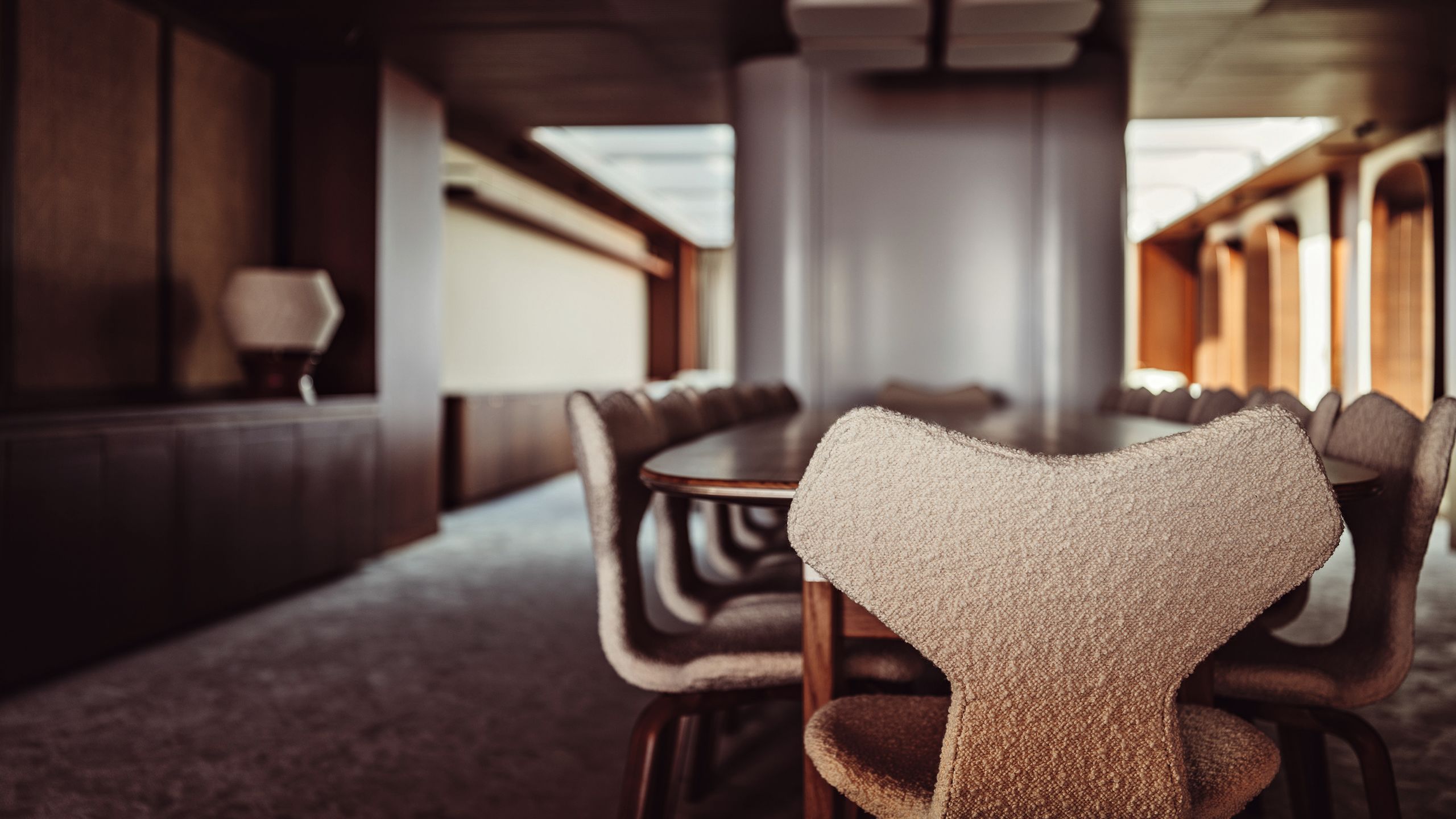

BENOIT LINERO
BENOIT LINERO
De Beaufort also had to fulfil Jousset’s request for six cabins to maximise charter accommodation and squeeze everything in around the huge saloon-cum-exhibition space.
It was a complex jigsaw of a general arrangement and he had to make some compromises, most notably, dialling down cabin size: “I told [Jousset] we can make them very comfortable and cool but they don’t need to be big. You’re there to enjoy the boat itself in its totality.”
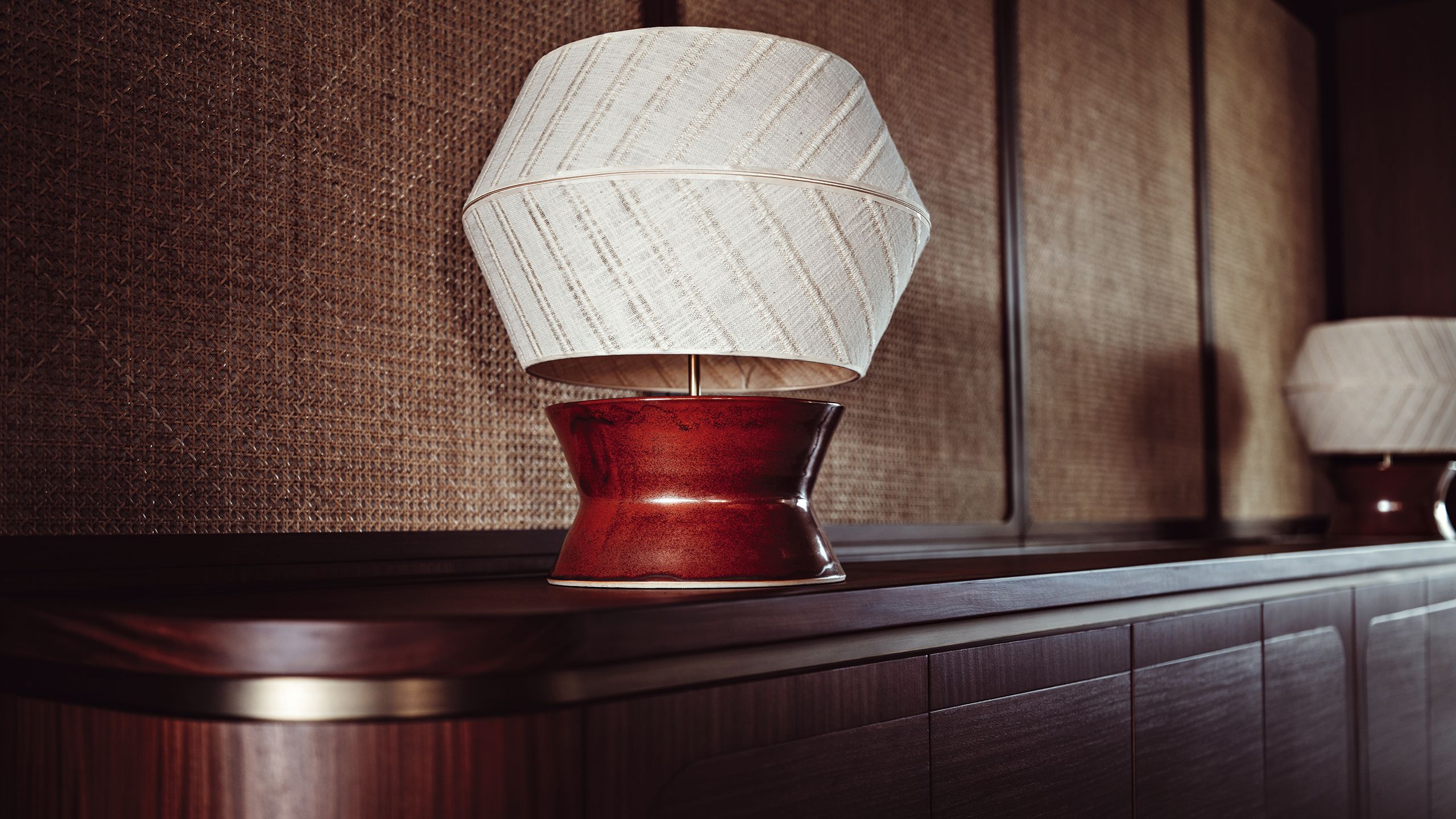
BENOIT LINERONatural textures including raffia walls, wooden lamps and textured fabrics add softness
BENOIT LINERONatural textures including raffia walls, wooden lamps and textured fabrics add softness
Besides weight and volume, there were other things to juggle: namely, that the boat had to be, in effect, designed twice over – as a museum and a charter boat. “The two are not compatible with each other,” says Bredy. “On a basic level, a large part of the high-end equipment and museum machinery needed to be hidden when the boat is in charter mode and the luxury interiors have to remain highly modular so they could be easily dismantlable by the crew and stored away.”
“I started to think about how much I loved culture and what I could contribute... I thought no one has thought of using a boat as a platform”
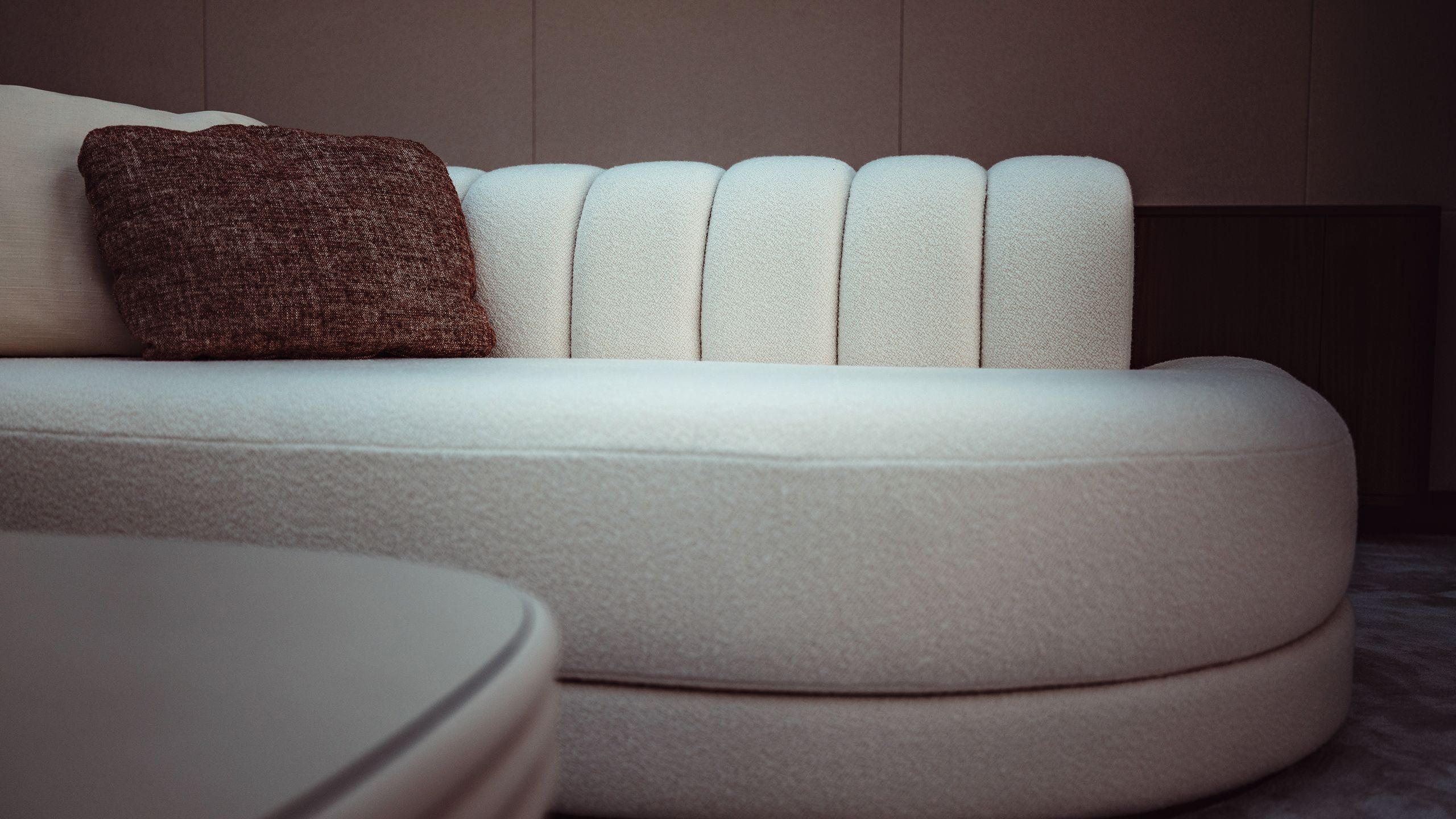
“I started to think about how much I loved culture and what I could contribute... I thought no one has thought of using a boat as a platform”

One of the biggest challenges was the exhibition tunnel, which consists of 16-metre-long LED screens that wrap around the walls. Another design first, they were engineered by Akumendo and ArScénique so they could be dismantled in panels, but the process was not without hiccups.
“As we quickly discovered, when you put them on a wall inside a boat, you create a sauna,” laughs Bredy. The solution was to integrate some extra air conditioning inside the mast column at the centre of the room. De Beaufort gave it curves so it didn’t look ugly.
INSIDE THE LAUNCH PARTY
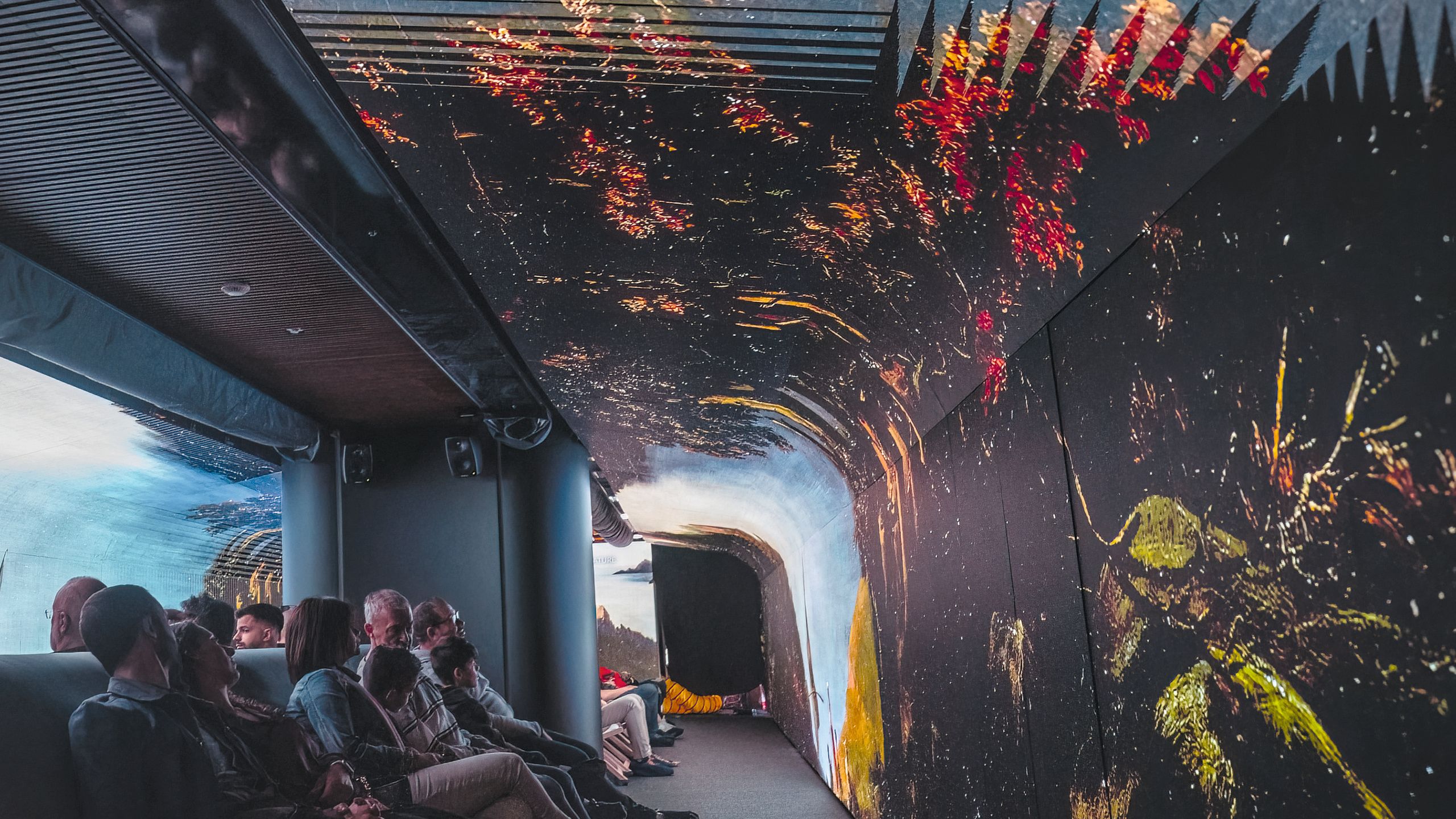
ArtExplorer cannot help but attract attention. While she is dwarfed by her neighbour, the 60-metre Amels Stella M moored on the banks of Venice’s Riva dei Sette Martiri, what she lacks in comparative size she more than makes up for in clout. I’m at the Biennale for her official launch party and a well-dressed art crowd is here in force to see her inaugural exhibition.
Taking art away from echoey, white-walled galleries is a smart move, as it intensifies the experience. Star of the show is the cocoon-like art tunnel curated by the Louvre. The team chose women as the theme as in some of the Med’s more conservative countries it’s rare to see women represented in art. This message comes loud and clear, as does the sail hoisted aloft emblazoned with the artist Laure Prouvost’s words, “No more Front Tears”; a play on the word “frontier” and a nod to the issue of migration.
“It’s important to show how art and culture can spark conversations and be a mobiliser of change,” Bruno Julliard, general manager of Frédéric Jousset’s Foundation Art Explora tells me. Equally immersive is the audio experience on the upper deck featuring sounds from the Med: children playing on a beach in Hyères; a herd of goats on the hills of Naples... Eyes closed, sun on your face, lulled by the boat’s gentle rocking, you could almost be there.
Over the next three years the Art Explora Festival will visit 15 countries around the Southern Med, alongside a travelling circus of pavilions housing physical exhibits. Jousset wants to make art more accessible, and if that means luring people with an invitation to look round a showstopping yacht, so be it. Even with the seen-it-all art connoisseurs, ArtExplorer’s pulling power is infectious. “I’d love a yacht like this,” one told me, sighing. I’d have to agree.
ArtExplorer cannot help but attract attention. While she is dwarfed by her neighbour, the 60-metre Amels Stella M moored on the banks of Venice’s Riva dei Sette Martiri, what she lacks in comparative size she more than makes up for in clout. I’m at the Biennale for her official launch party and a well-dressed art crowd is here in force to see her inaugural exhibition.
Taking art away from echoey, white-walled galleries is a smart move, as it intensifies the experience. Star of the show is the cocoon-like art tunnel curated by the Louvre.
The team chose women as the theme as in some of the Med’s more conservative countries it’s rare to see women represented in art. This message comes loud and clear, as does the sail hoisted aloft emblazoned with the artist Laure Prouvost’s words, “No more Front Tears”; a play on the word “frontier” and a nod to the issue of migration.
“It’s important to show how art and culture can spark conversations and be a mobiliser of change,” Bruno Julliard, general manager of Frédéric Jousset’s Foundation Art Explora tells me.
Equally immersive is the audio experience on the upper deck featuring sounds from the Med: children playing on a beach in Hyères; a herd of goats on the hills of Naples... Eyes closed, sun on your face, lulled by the boat’s gentle rocking, you could almost be there.
Over the next three years the Art Explora Festival will visit 15 countries around the Southern Med, alongside a travelling circus of pavilions housing physical exhibits.
Jousset wants to make art more accessible, and if that means luring people with an invitation to look round a showstopping yacht, so be it. Even with the seen-it-all art connoisseurs, ArtExplorer’s pulling power is infectious. “I’d love a yacht like this,” one told me, sighing. I’d have to agree.
When ArtExplorer switches into charter mode, the yacht’s interiors are unrecognisable. An artful smattering of varnished mahogany – a staple ingredient in classic sailing boats – contrasts with contemporary furniture and fittings.
The concrete-look flooring is modern yet, mindful of the 2,000 people trekking through the yacht, extremely hard-wearing. Inspired by the concrete floors of the Fondation Pinault in Venice, de Beaufort tracked down an alternative that wouldn’t crack with movement and found the answer in a resin floor used in supertankers: warmer, more tactile underfoot and, crucially, lighter.
It’s pared down, cool and far from the lavish interiors of many luxury charters, but de Beaufort was adamant it would work. Jousset was initially sceptical.
“He told me ‘we’re not doing a kind of monastic church here!’ But I really wanted to be very precise in what we do, and not try to add and add stuff. Everything in the boat is really oriented towards natural material and craftsmanship… because the boat is beautiful, and this beauty needs to be expressed in simple things. In the end he trusted me.”
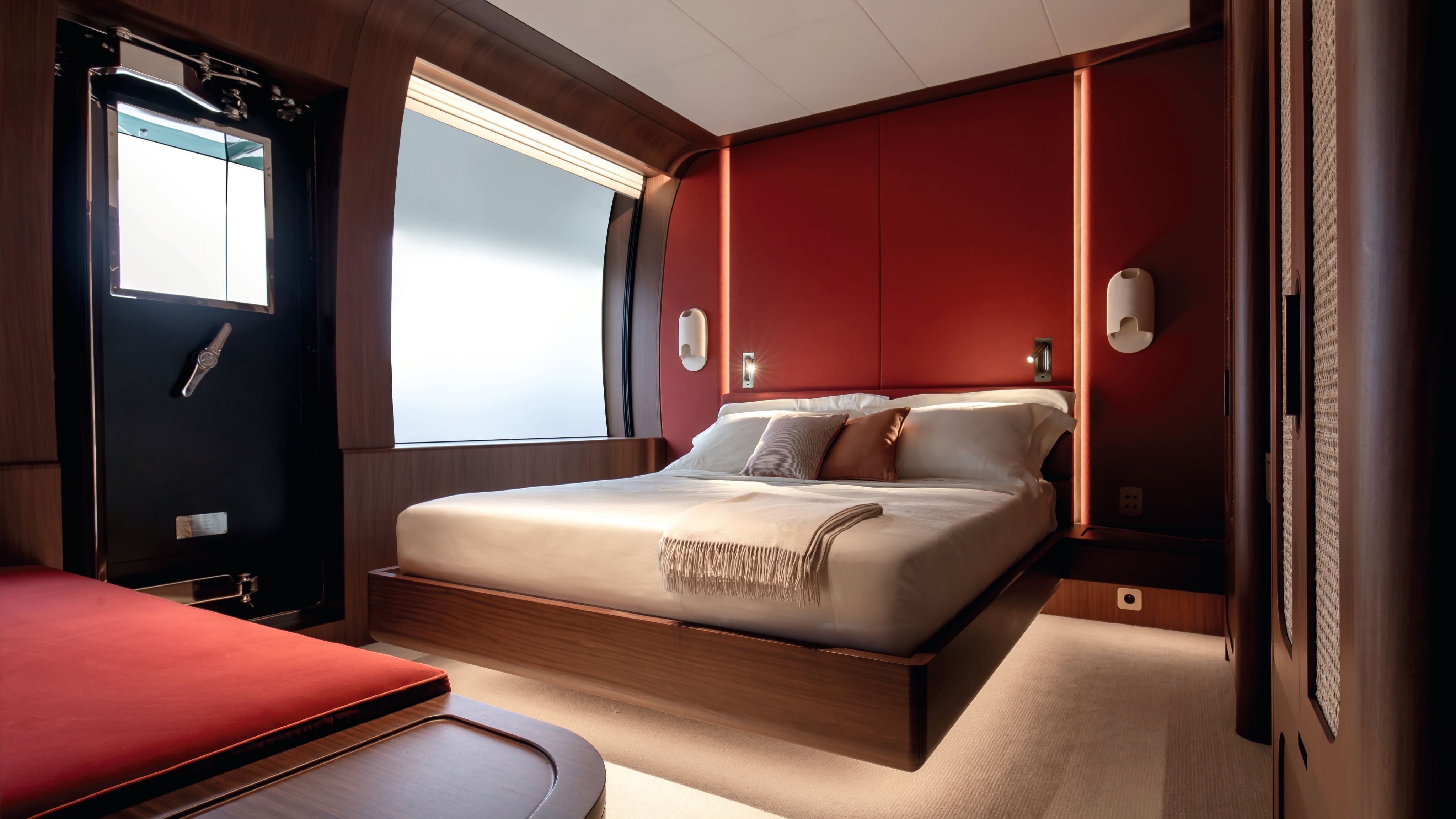
GUILIANO SARGENTINI
GUILIANO SARGENTINI
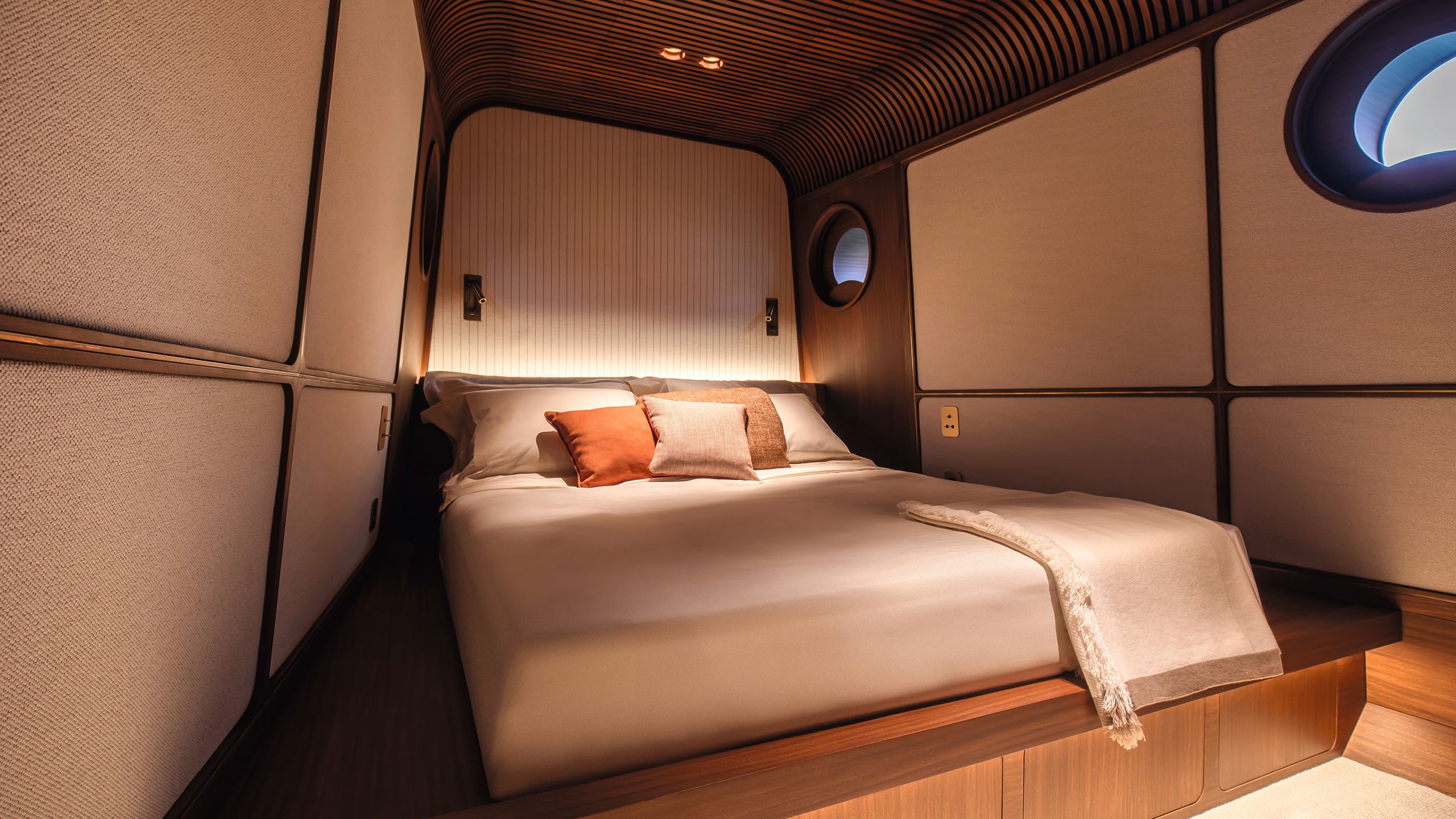
GUILIANO SARGENTINI
GUILIANO SARGENTINI
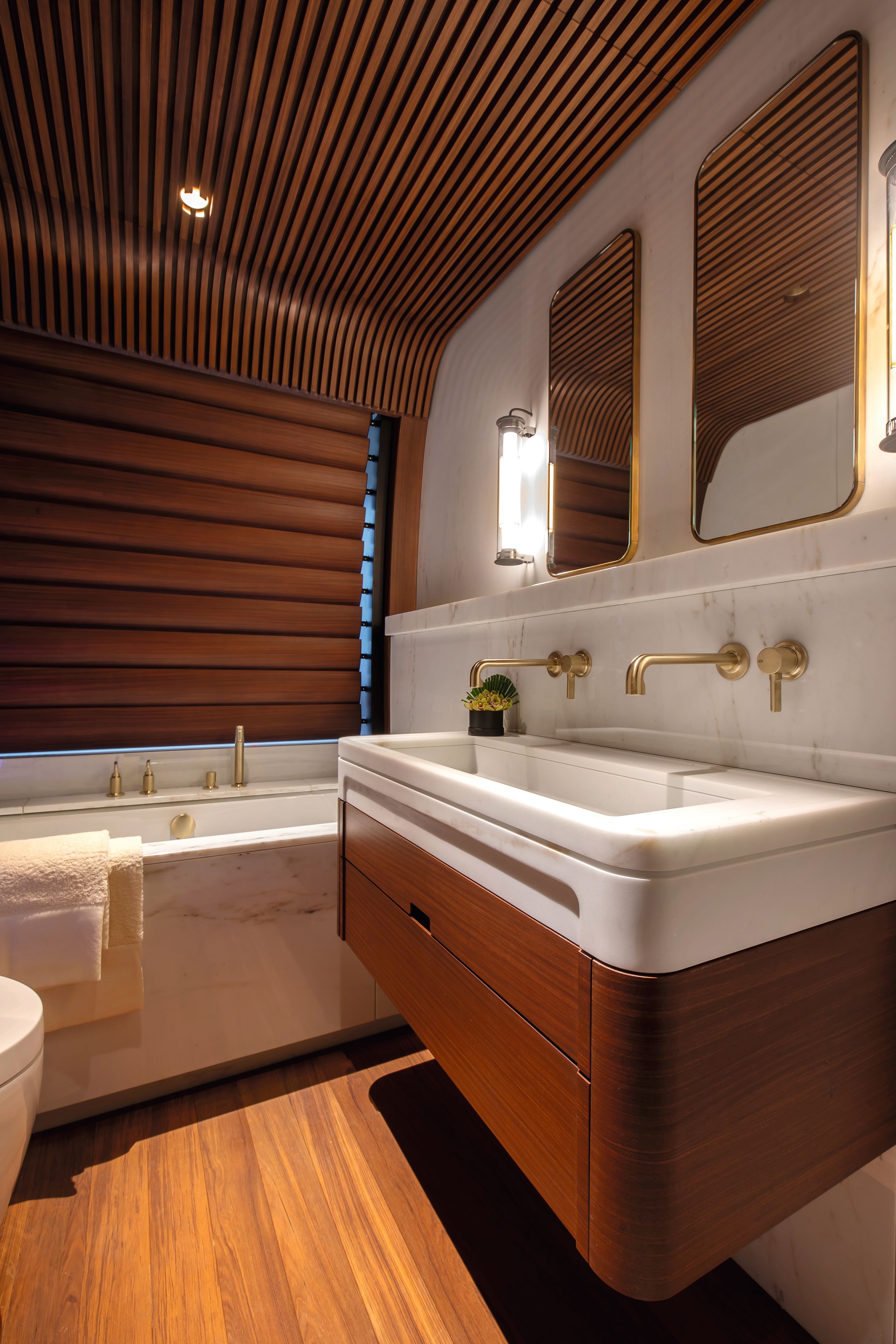
GUILIANO SARGENTINI
GUILIANO SARGENTINI
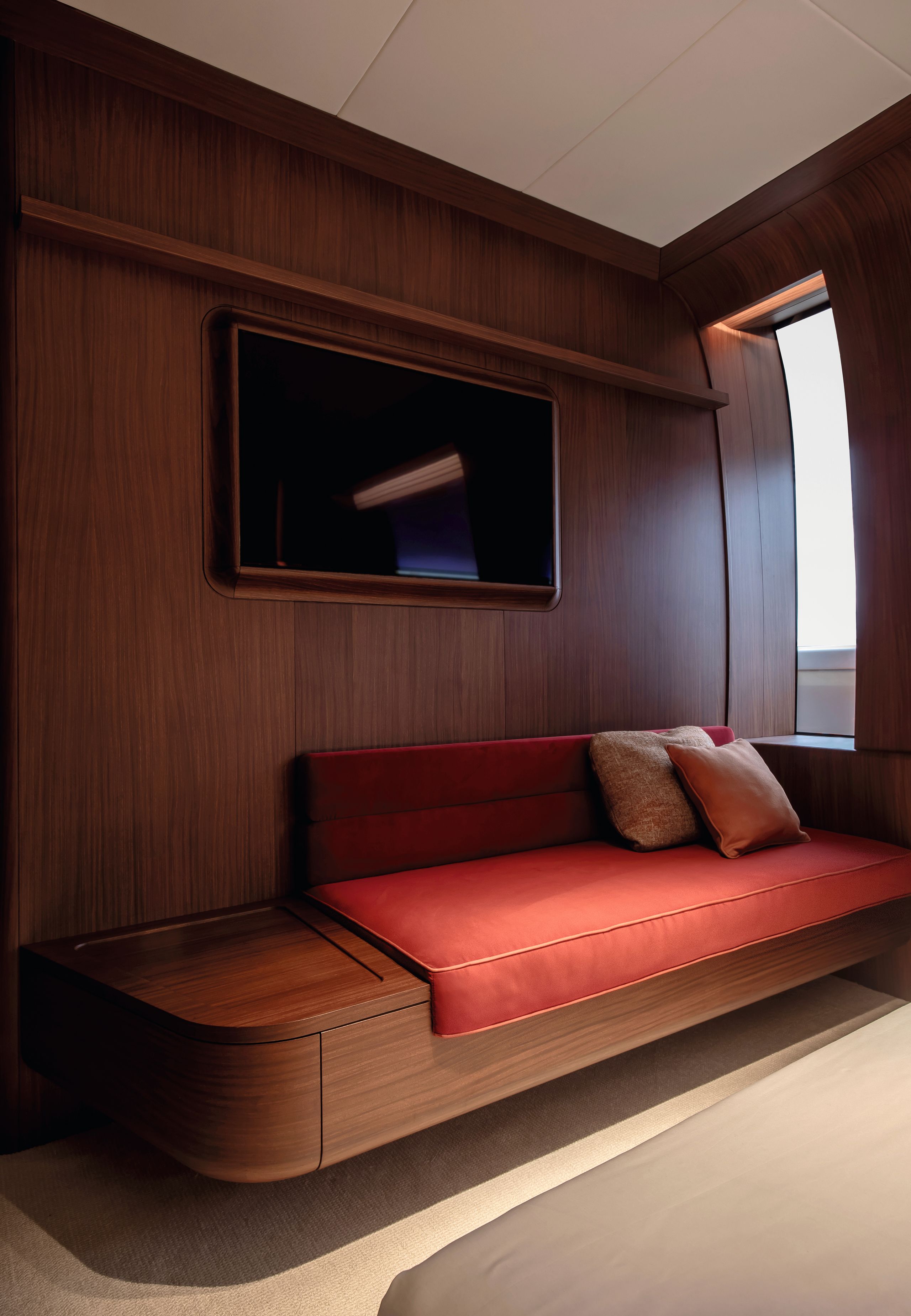
GUILIANO SARGENTINI
GUILIANO SARGENTINI
ArtExplorer accommodates up to 12 guests in six cabins, four of which are on the main deck, including the master suite and a VIP cabin (top left, bottom right); the two guest cabins located in the starboard hull use the natural curvature as a design element, highlighted by mahogany detailing (top right)
Outside, huge swathes of wrap-round bronzetinted glass continue the futuristic theme, a concept realised with the help of Eckersley O’Callaghan, a London glass specialist that has previously worked with Apple and NASA.
These were another design innovation, requiring months of meticulous pre-engineering. Boats naturally twist and move on water, De Beaufort explains. “So, the torsions can be huge when the boat is moving, you can have 50 centimetres of deflection or even more.”

GUILIANO SARGENTINIThe crew mess is simple and practical
GUILIANO SARGENTINIThe crew mess is simple and practical
For both Bredy, Bigagli and de Beaufort, the sleepless nights have all been worth it and they can finally turn their attention to other projects. For Jousset, however, his work is just beginning. ArtExplorer conducted her maiden exhibition in Malta in March, followed by Venice, April 17 to 22. Judging by the crowds she is attracting, his plan seems to be on track.
And if someone copies his idea and builds a bigger boat? Jousset isn’t fazed. “When you do charity or philanthropy it’s always great to be in the spotlight. But if your true ambition is really to make an impact, then you’d be happy for people to join the cause,” he says. “I’d be very happy because ArtExplorer will forever be the first boat museum. I definitely don’t want it to be the last.”
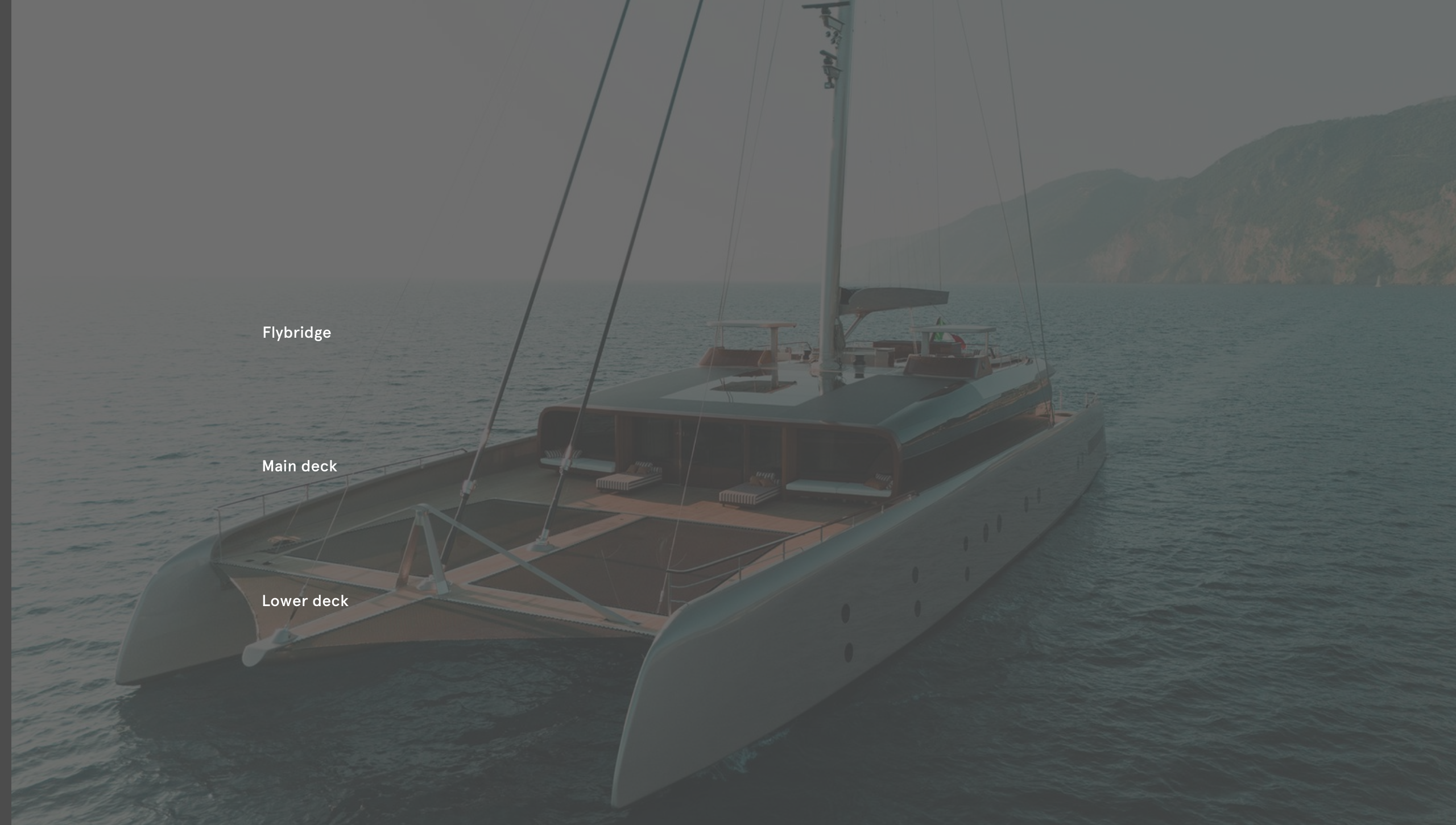
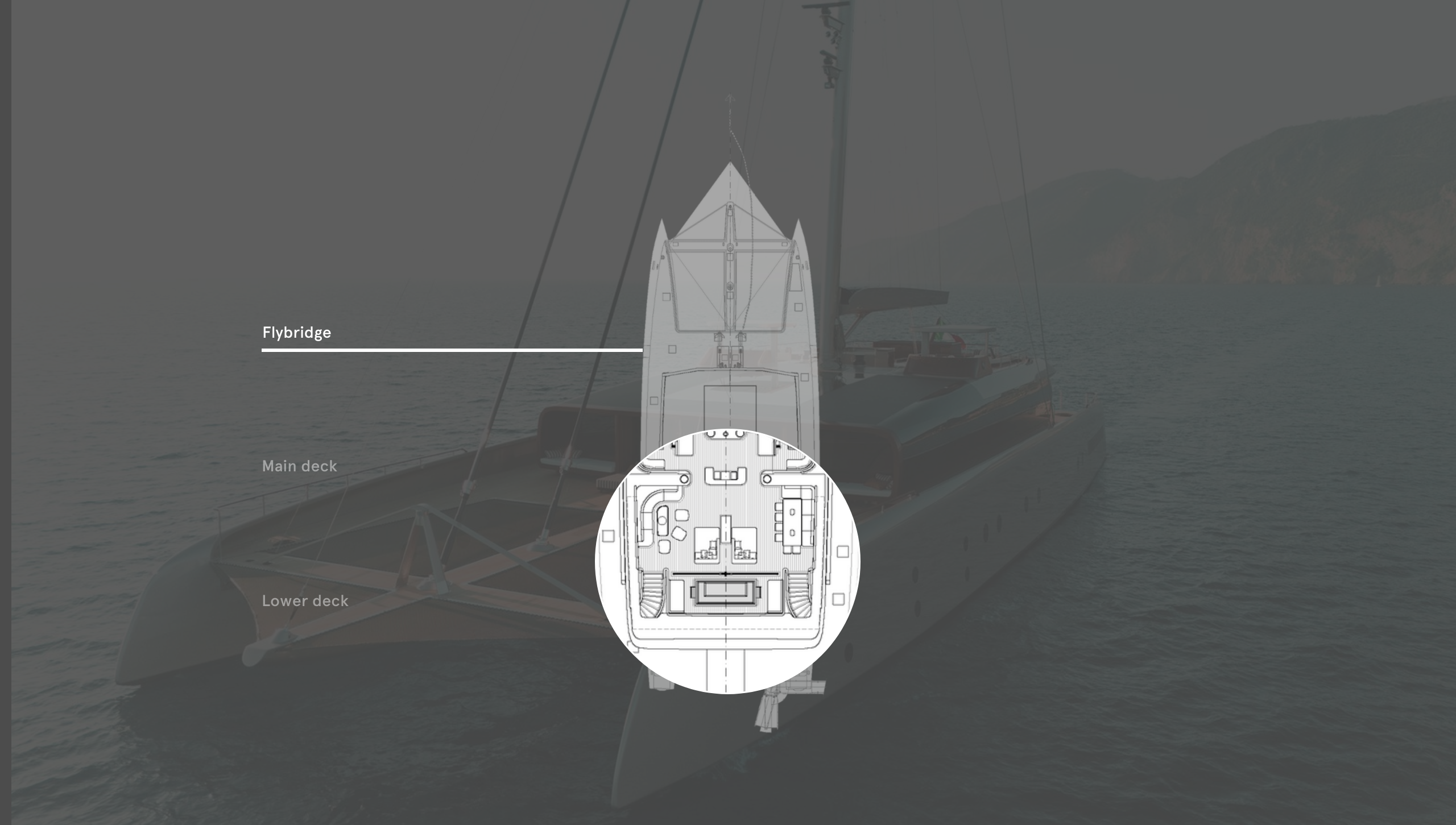
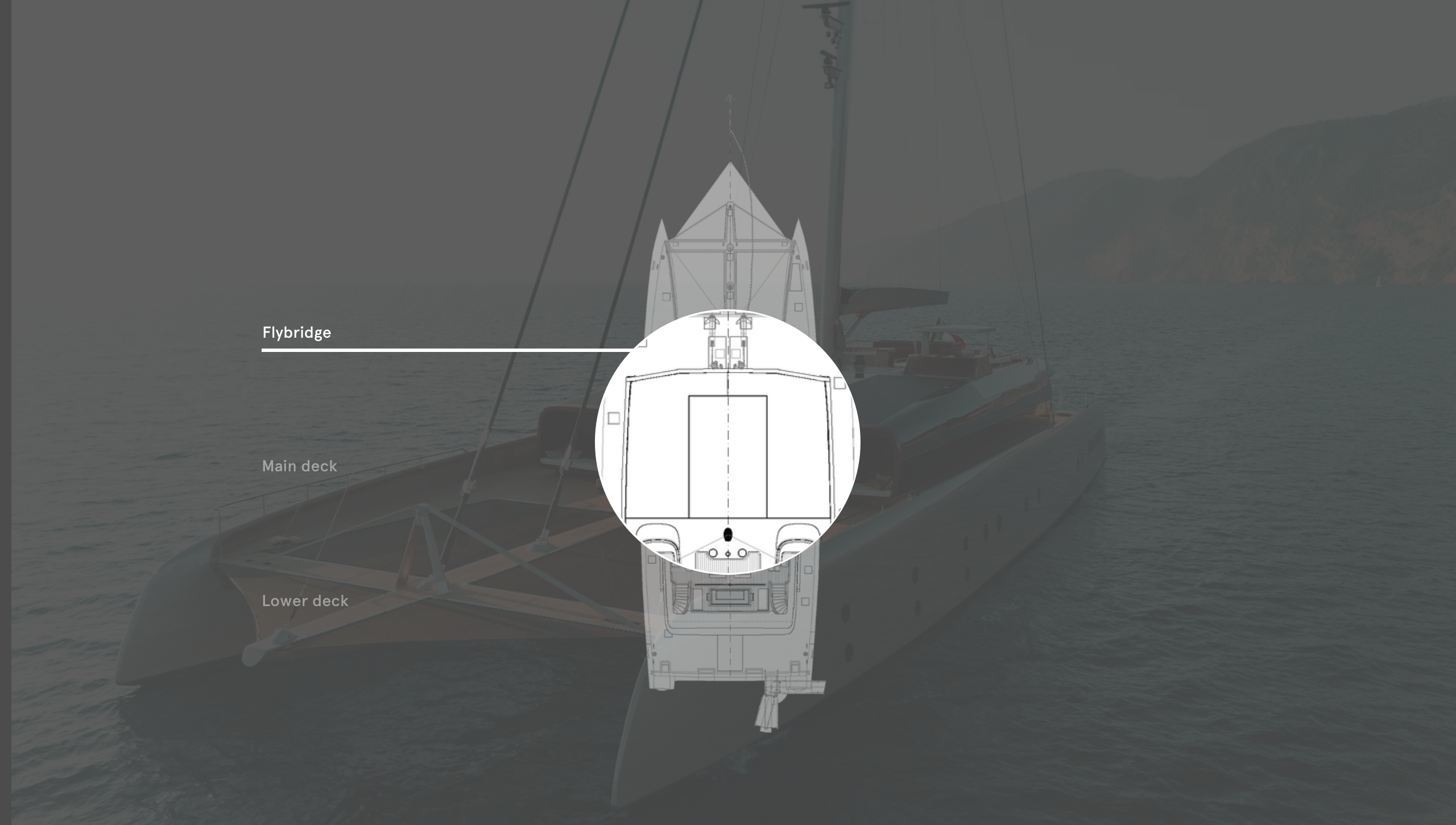
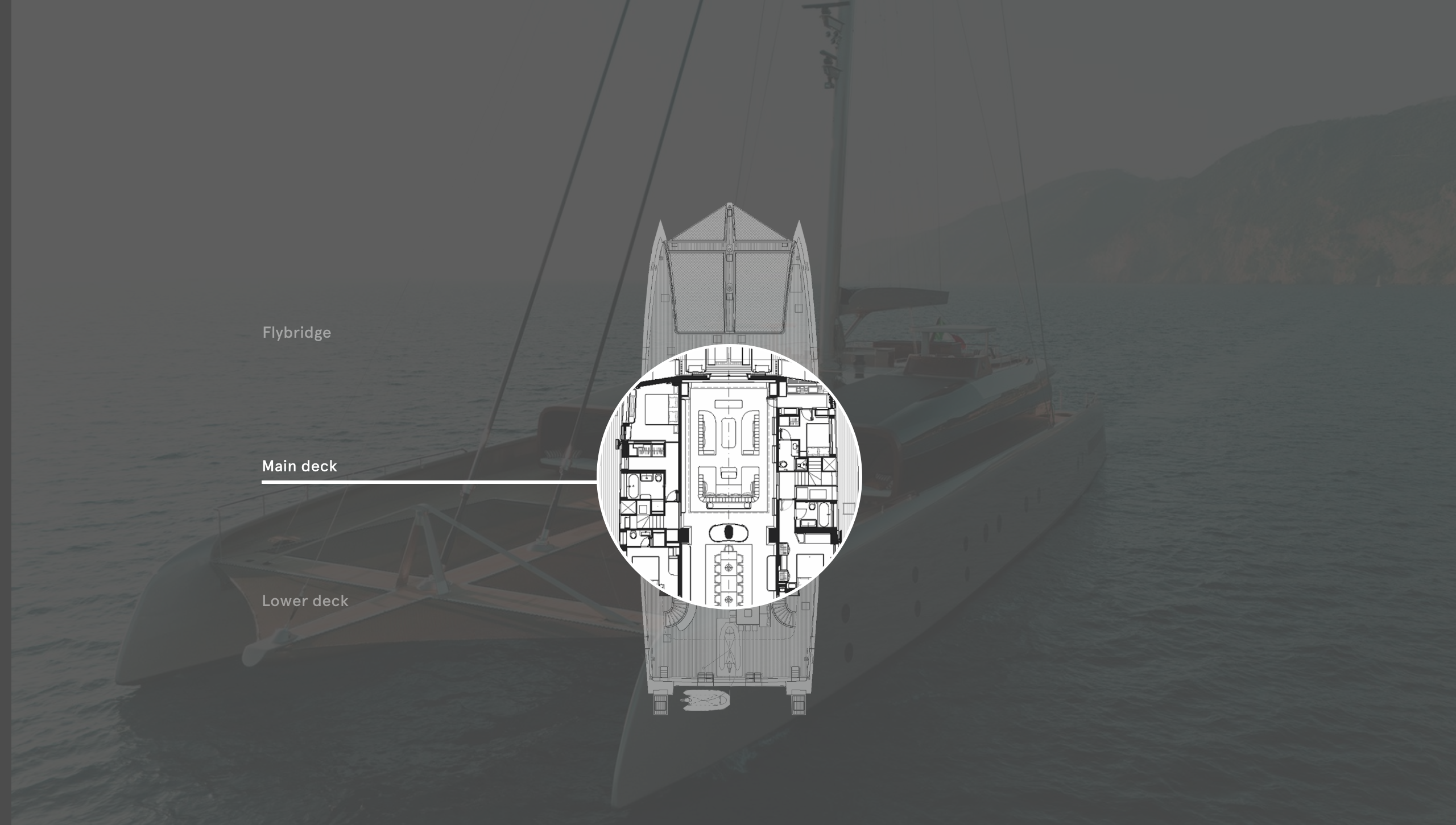
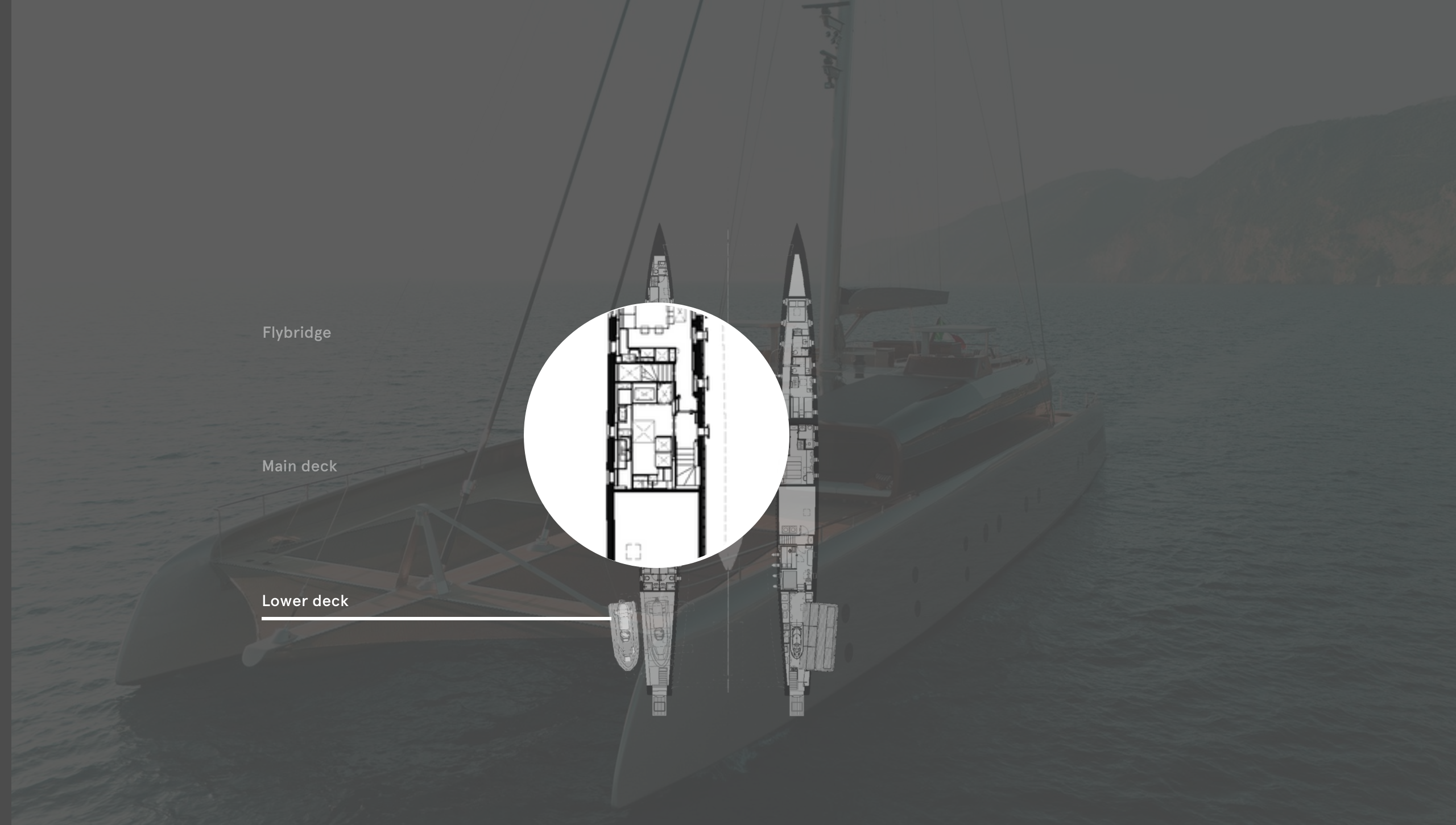
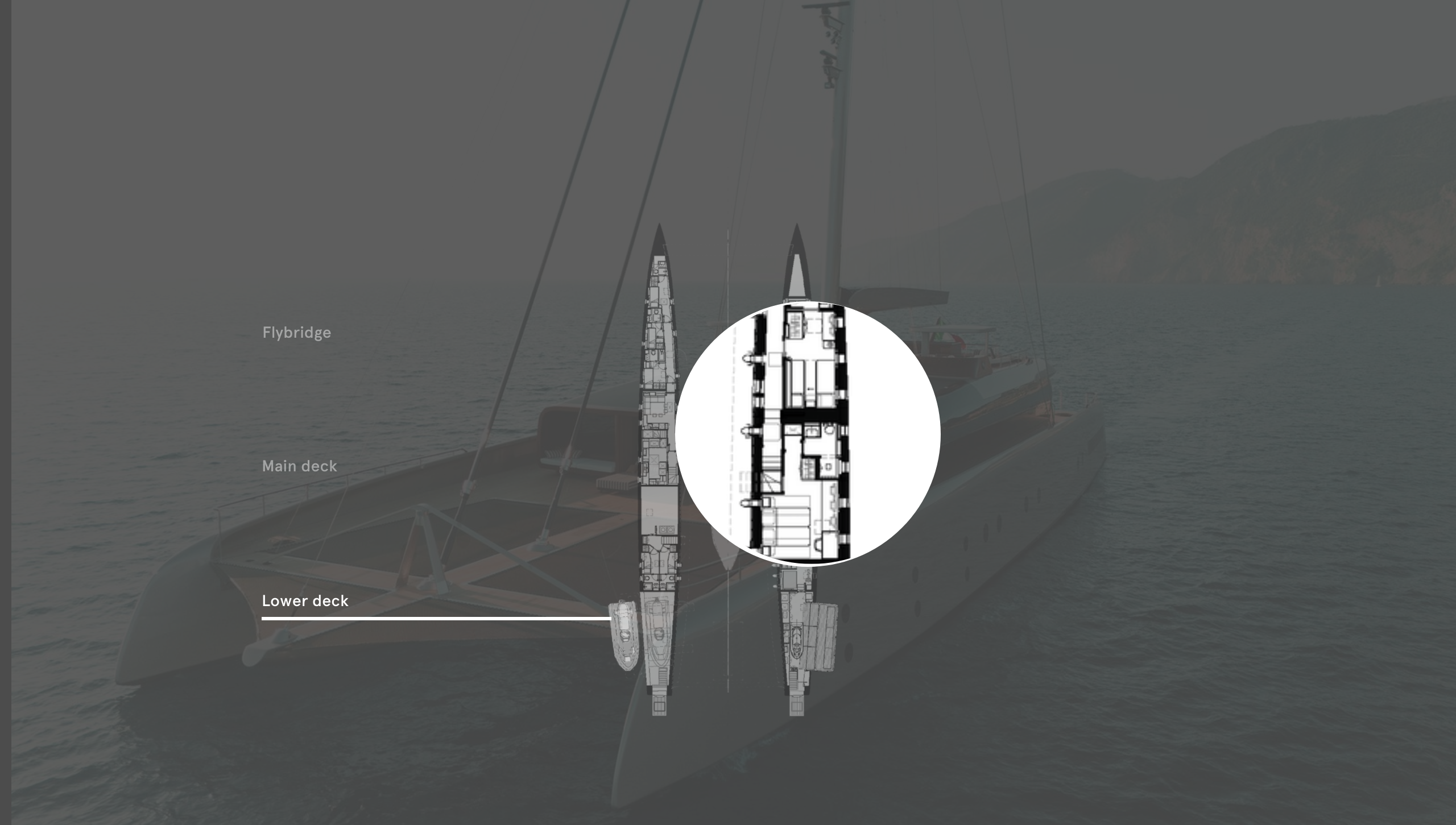
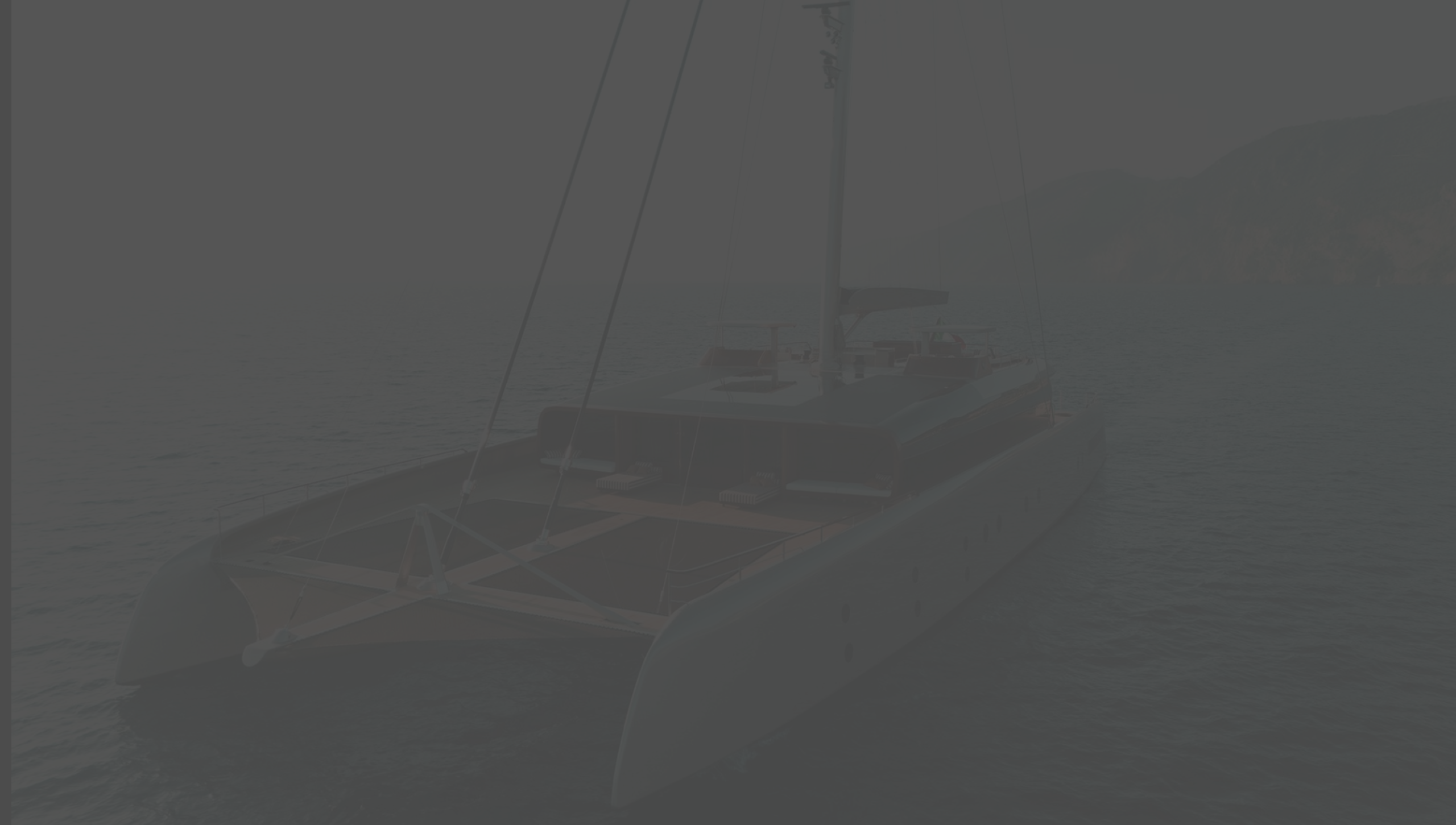
The deckhouse roof is covered with 65m2 of solar panels that generate 60kW of energy a day
A spa pool is included on the spacious flybridge
The master cabin has direct access to the side deck
The central corridor is the main saloon in charter mode and a gallery in museum mode
Crew are accommodated in the port hull, which also holds the galley
Two guest cabins are found in the forward starboard hull
LOA 46.5m | Gross tonnage |
LWL 44.84m | Engines |
Beam 17.2m | Generators |
Draught 3.54m | Speed under power |
Spars | Sails |
Sail area | Fuel capacity |
Freshwater capacity | Tenders |
Owner/guests 12 | Crew 10 |
Construction | Classification |
Naval architecture | Builder/year +39 0585 5062 perininavi.it |
Exterior styling and interior design | For charter |
First published in the June 2024 issue of BOAT International. Get this magazine sent straight to your door, or subscribe and never miss an issue.

